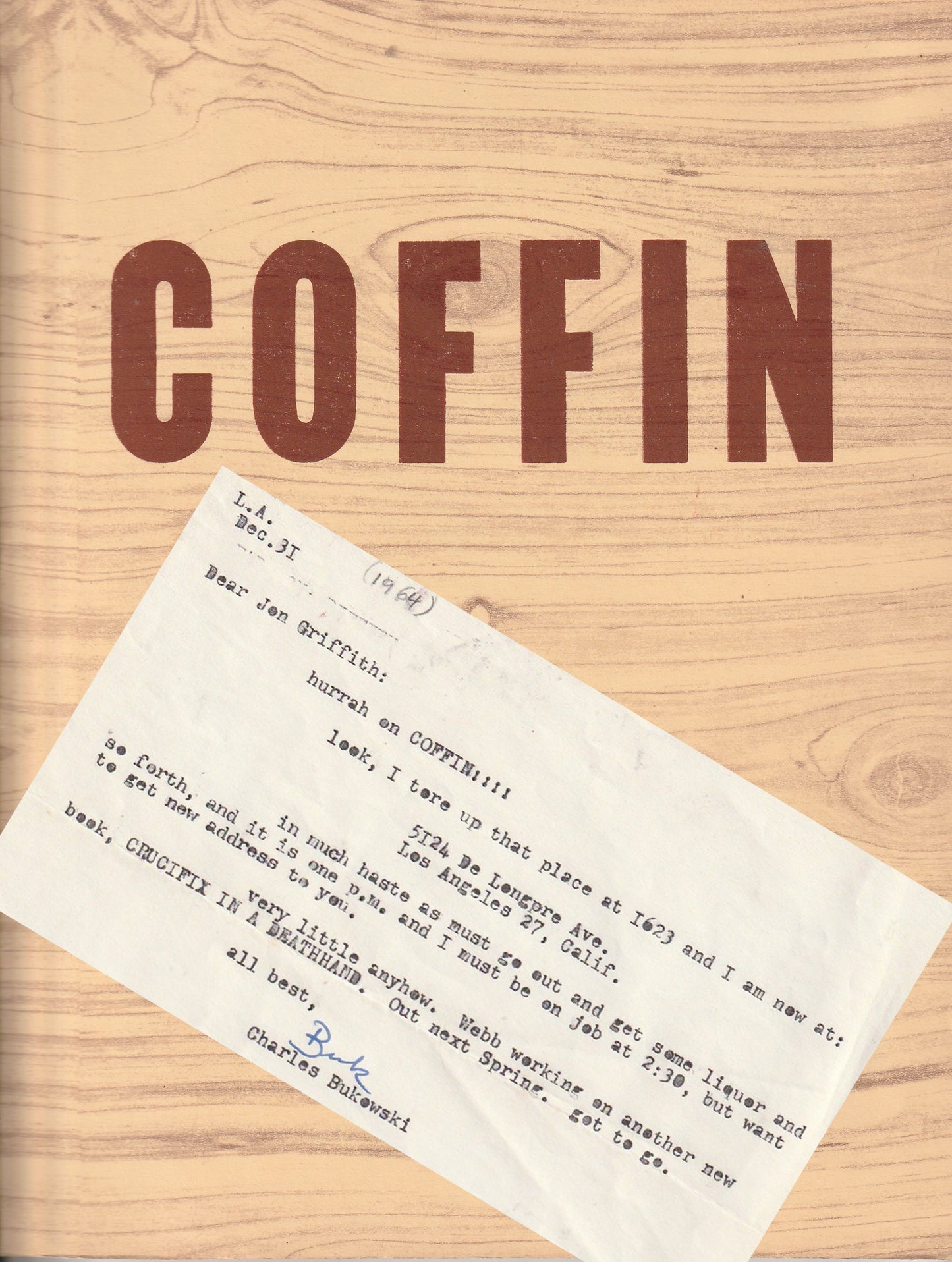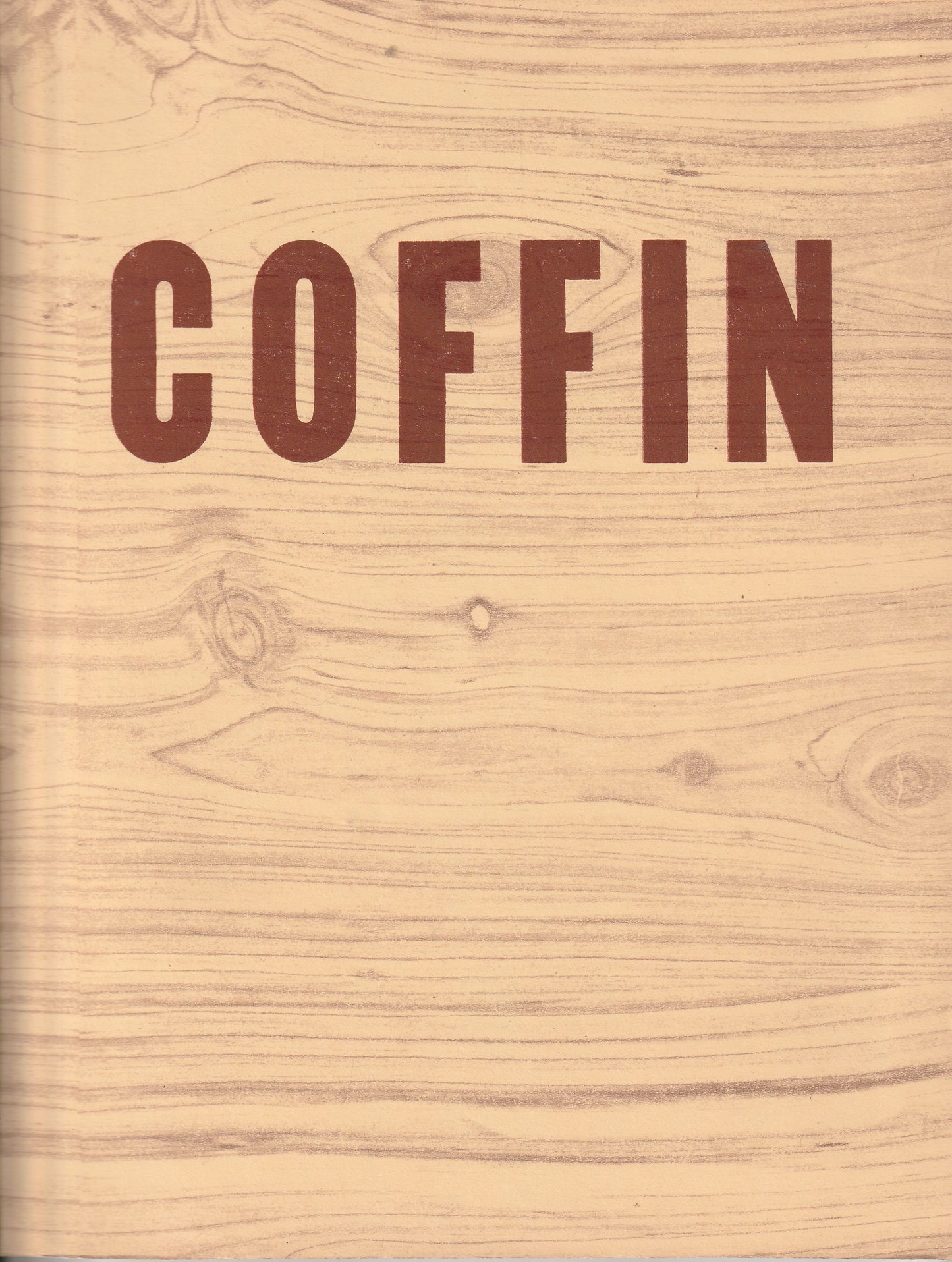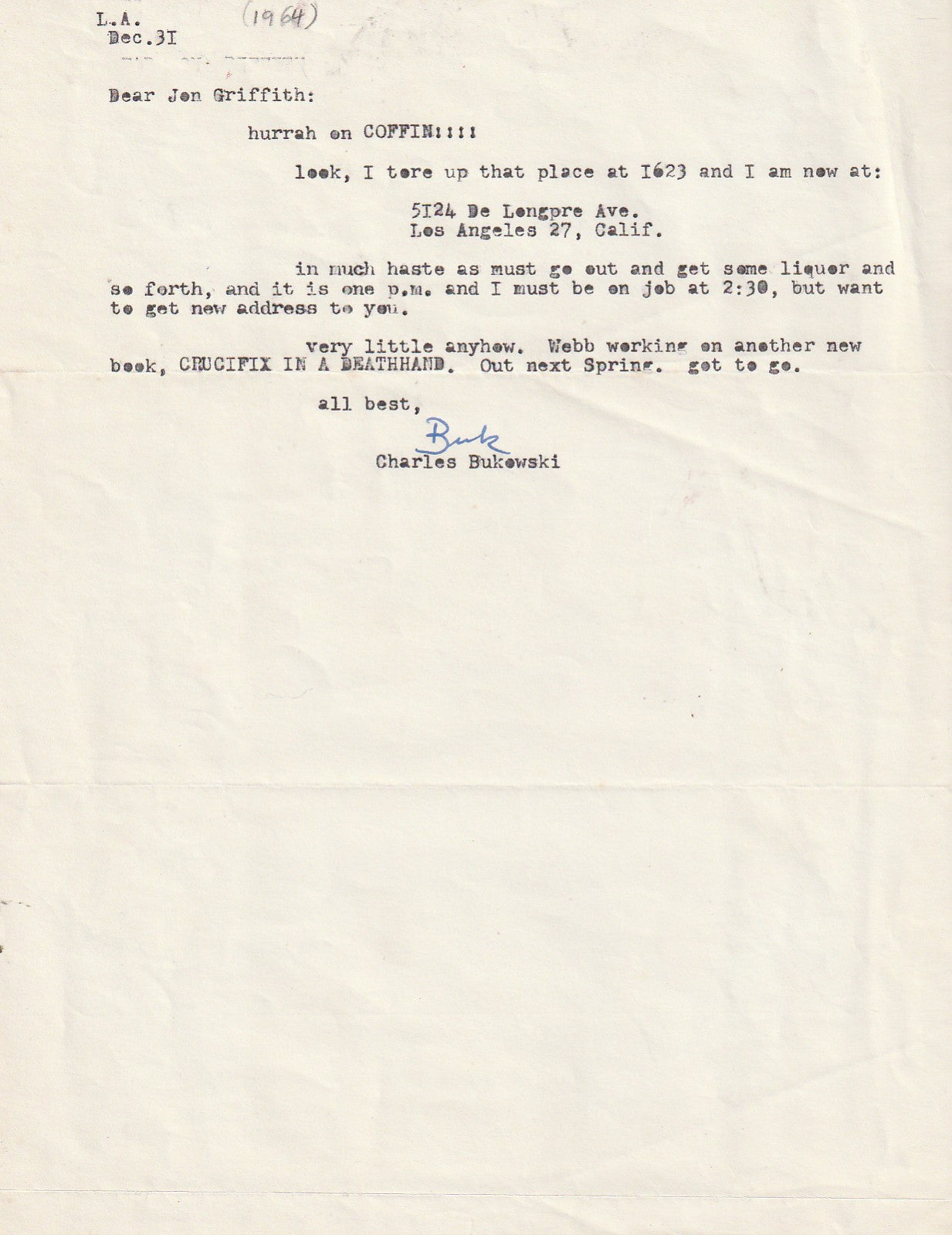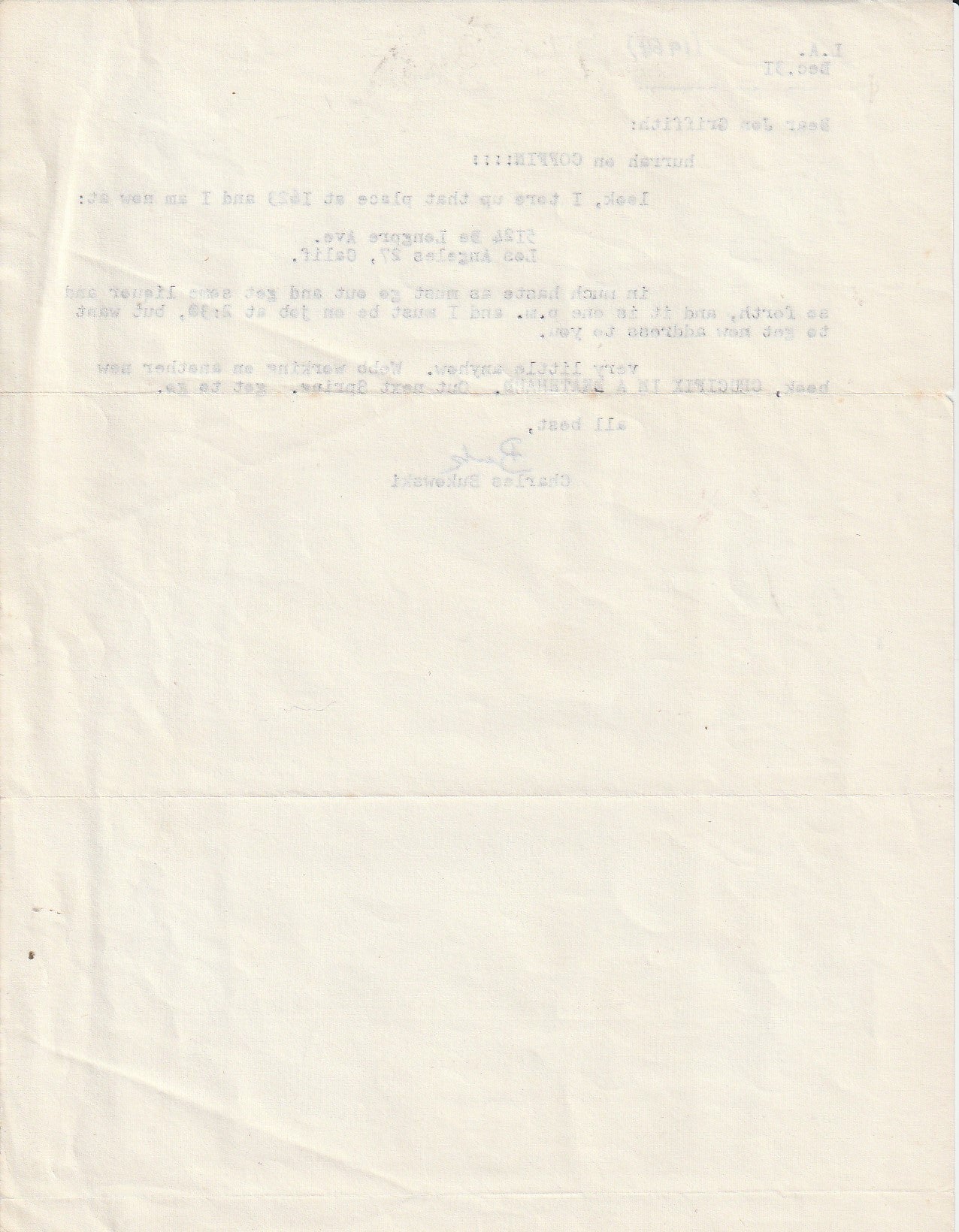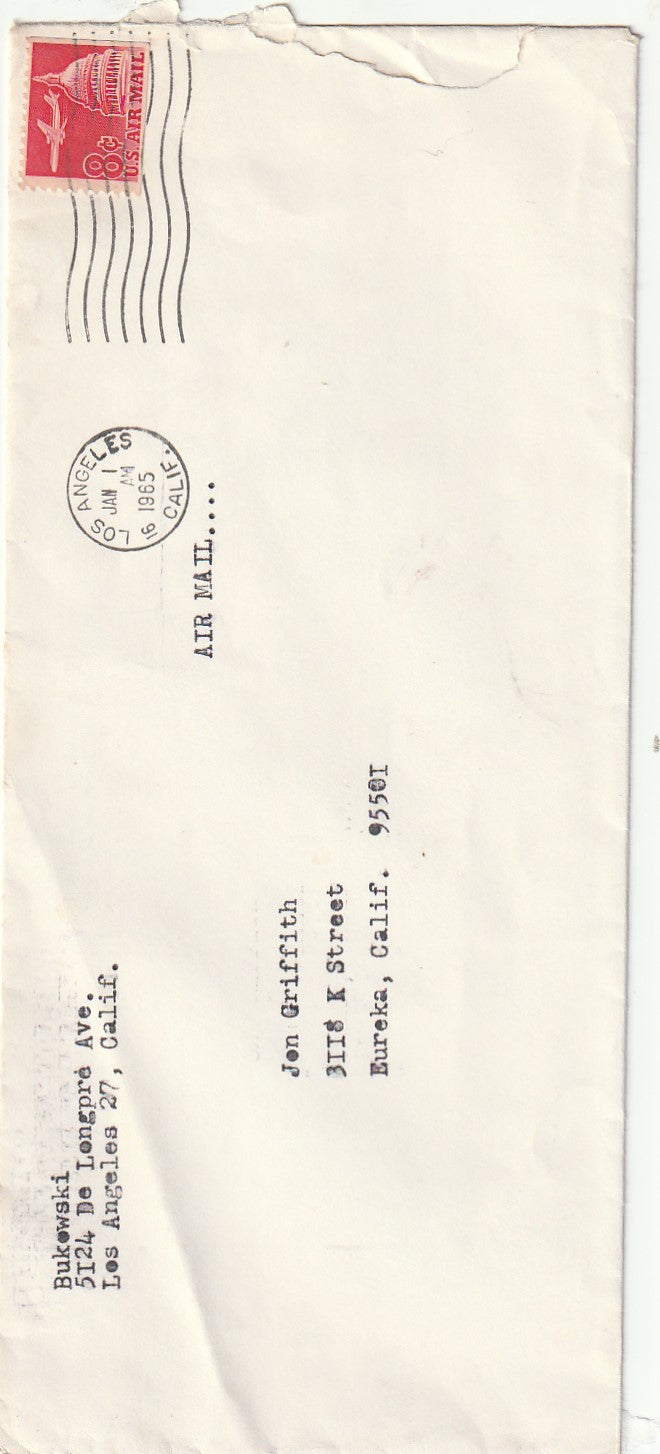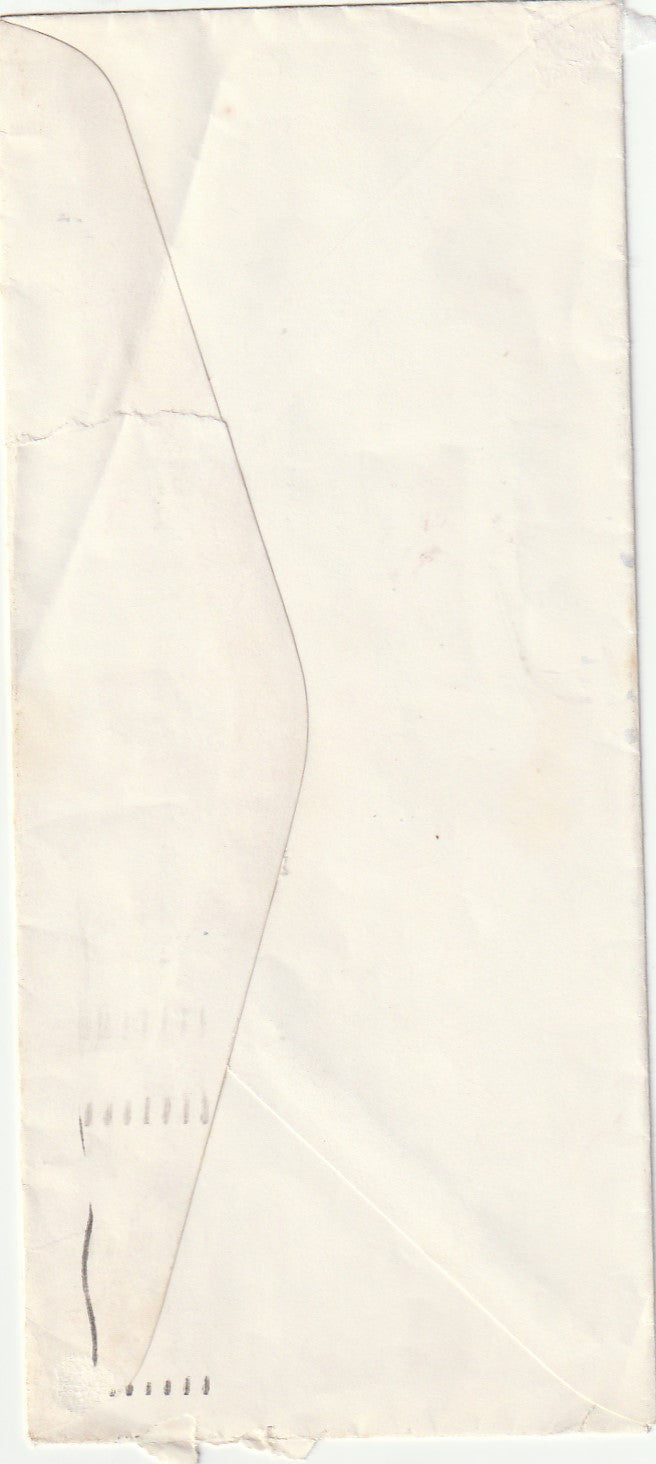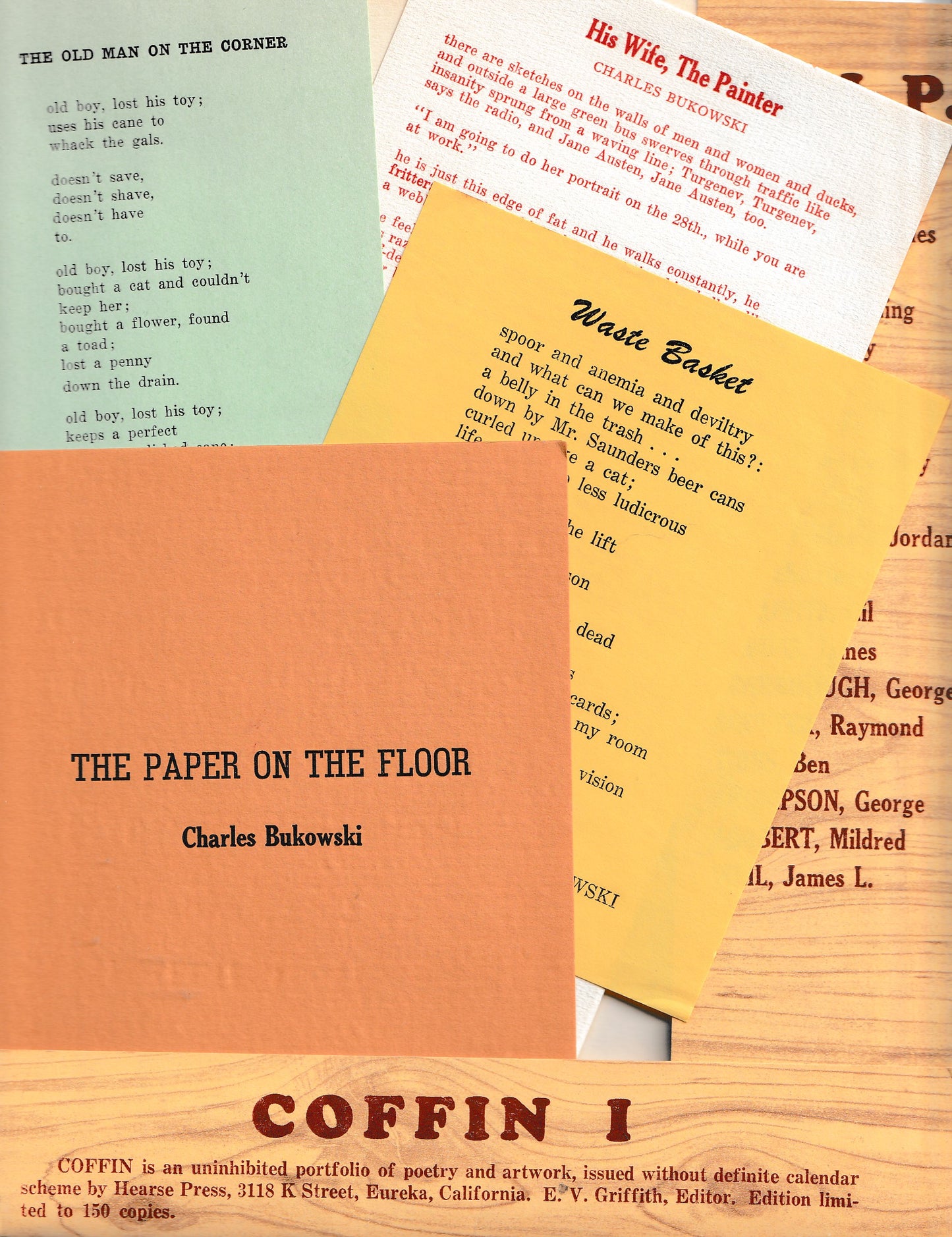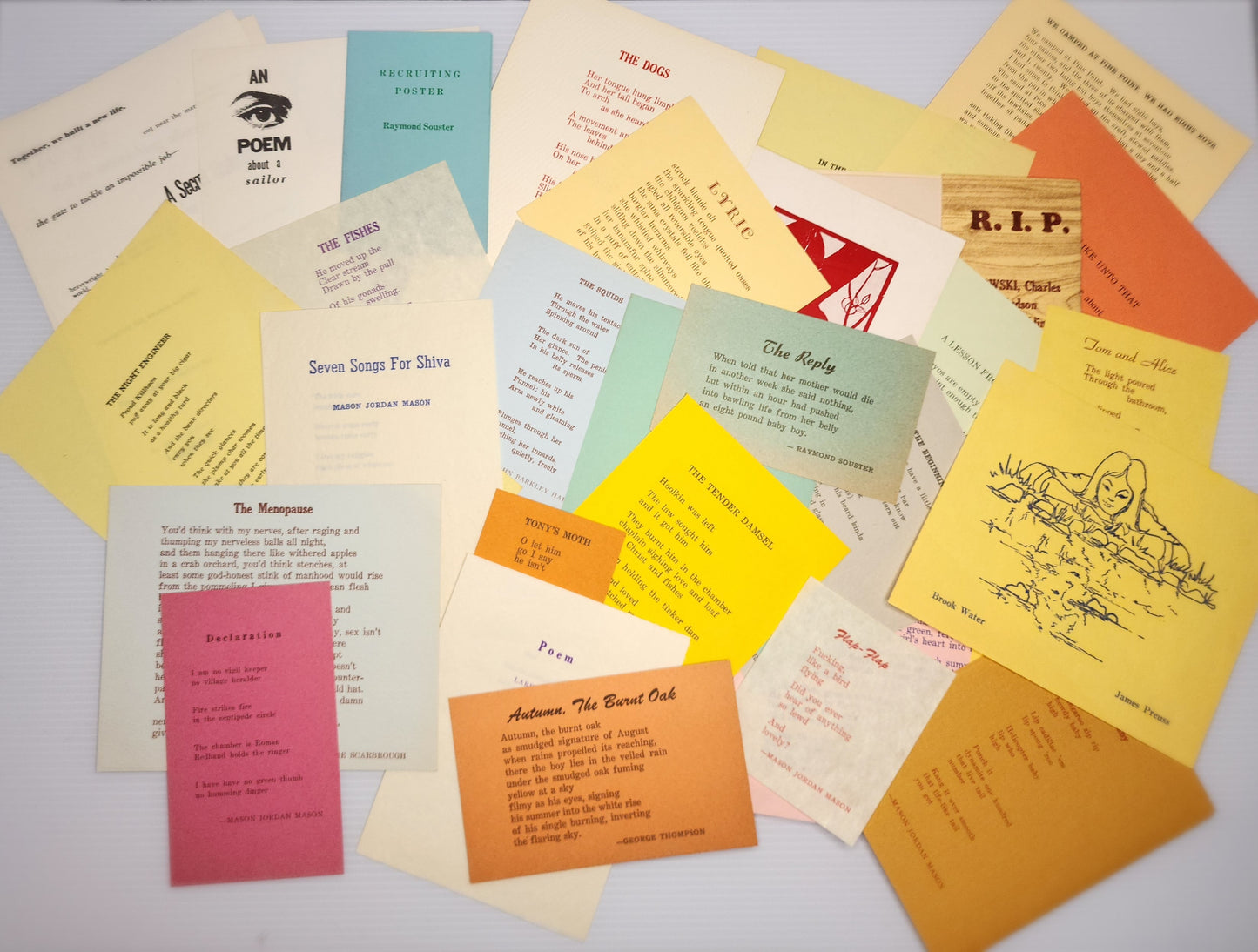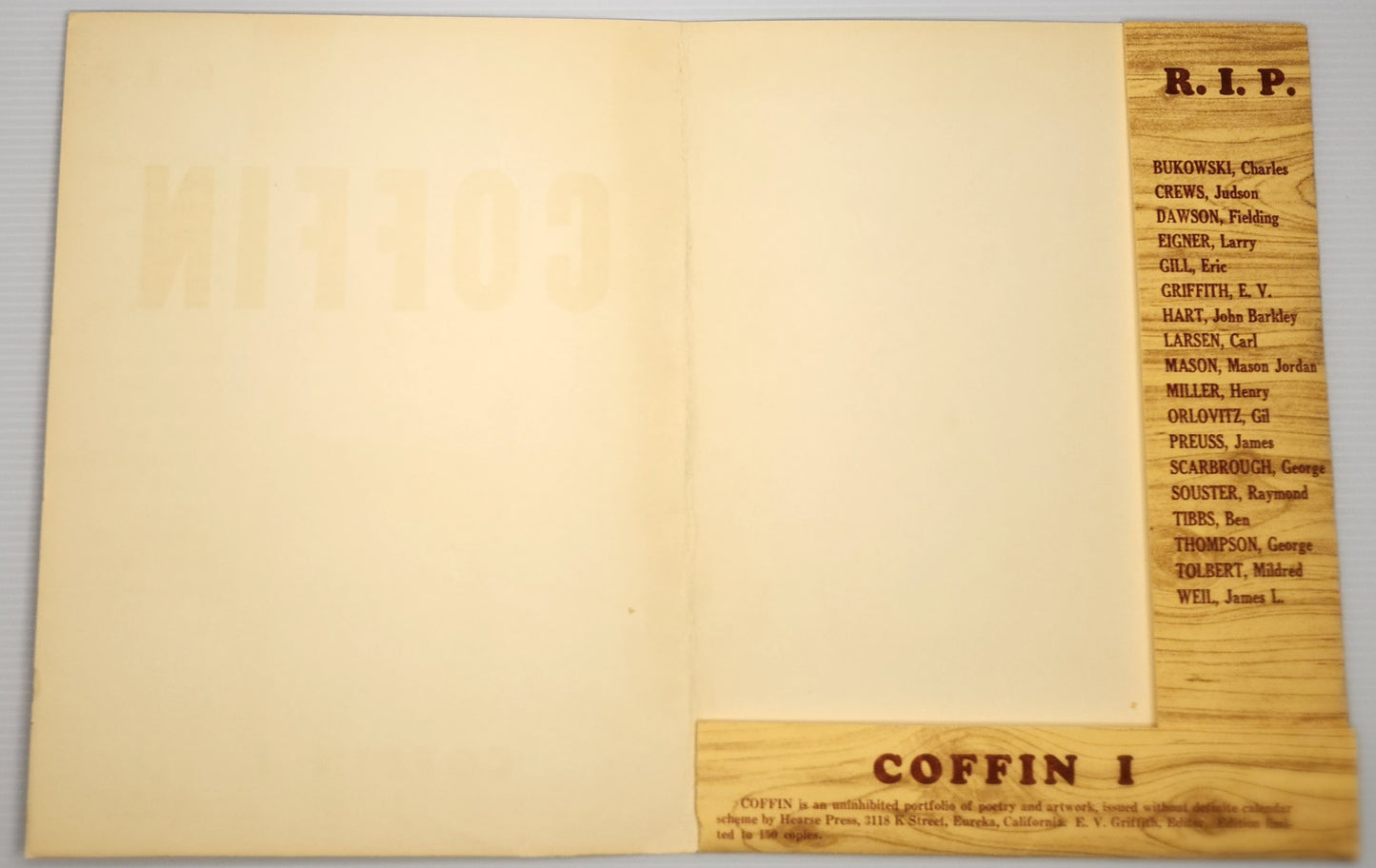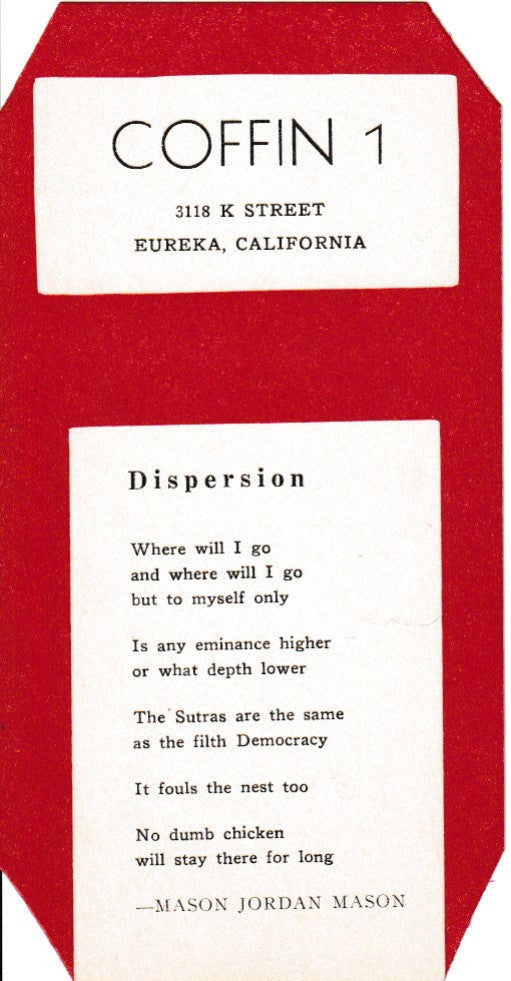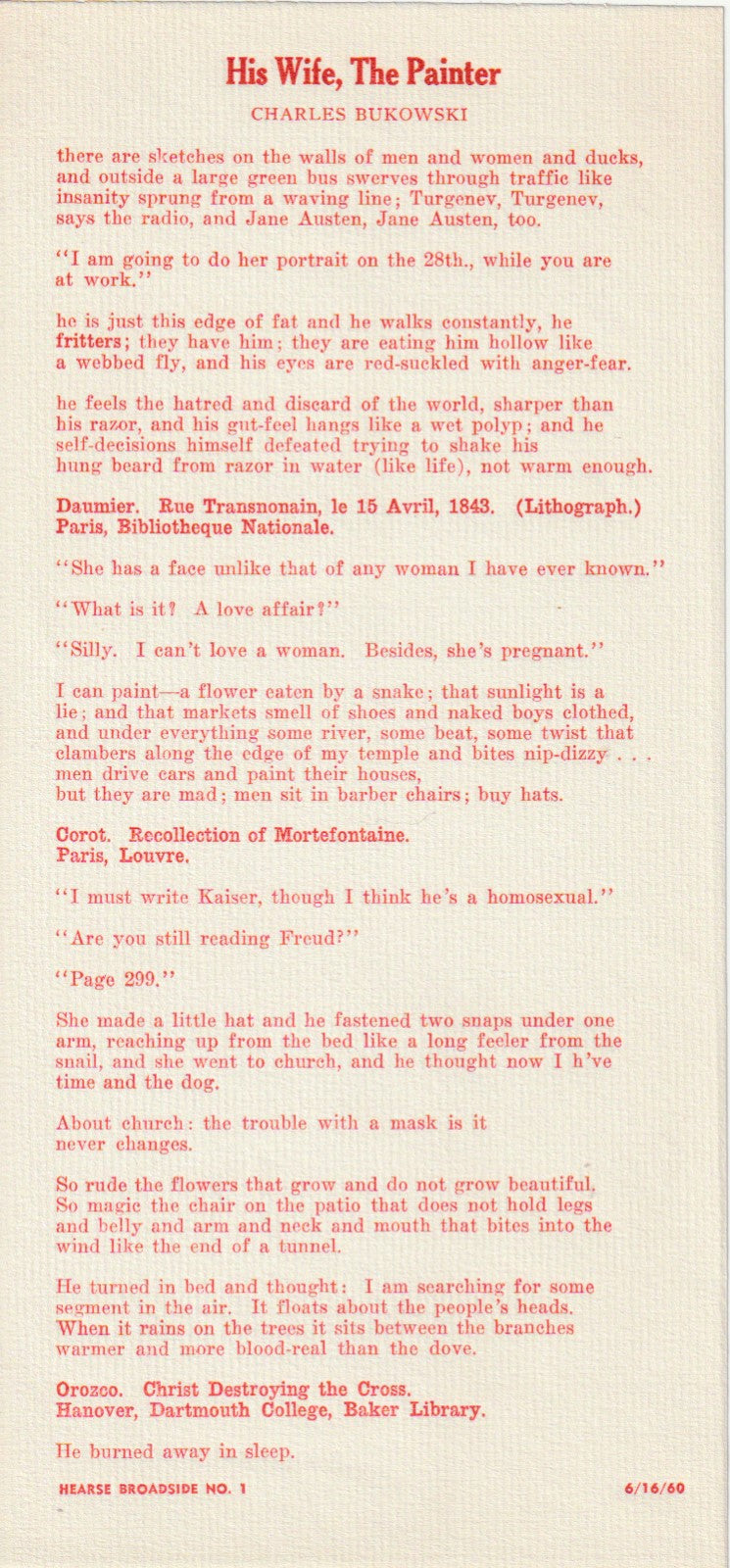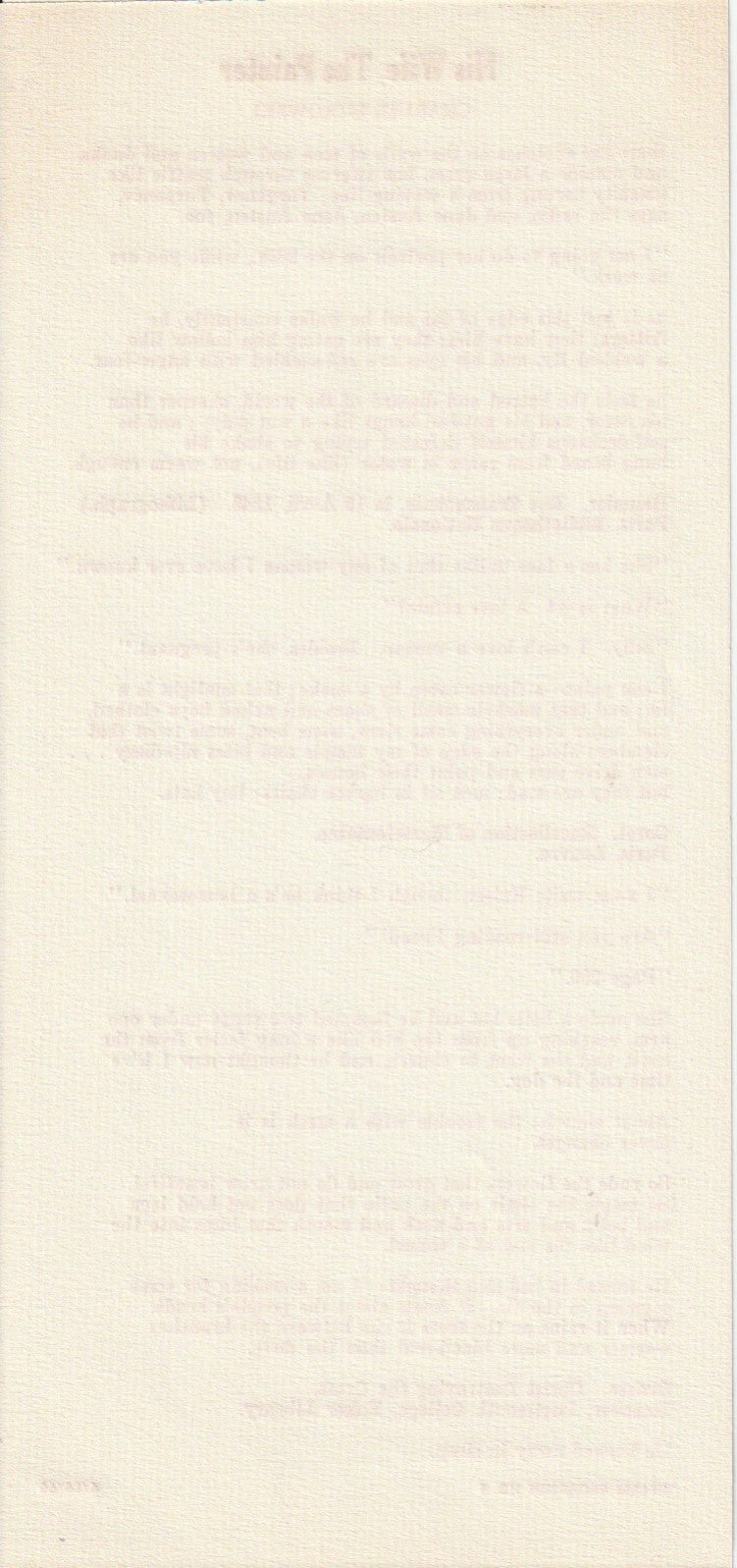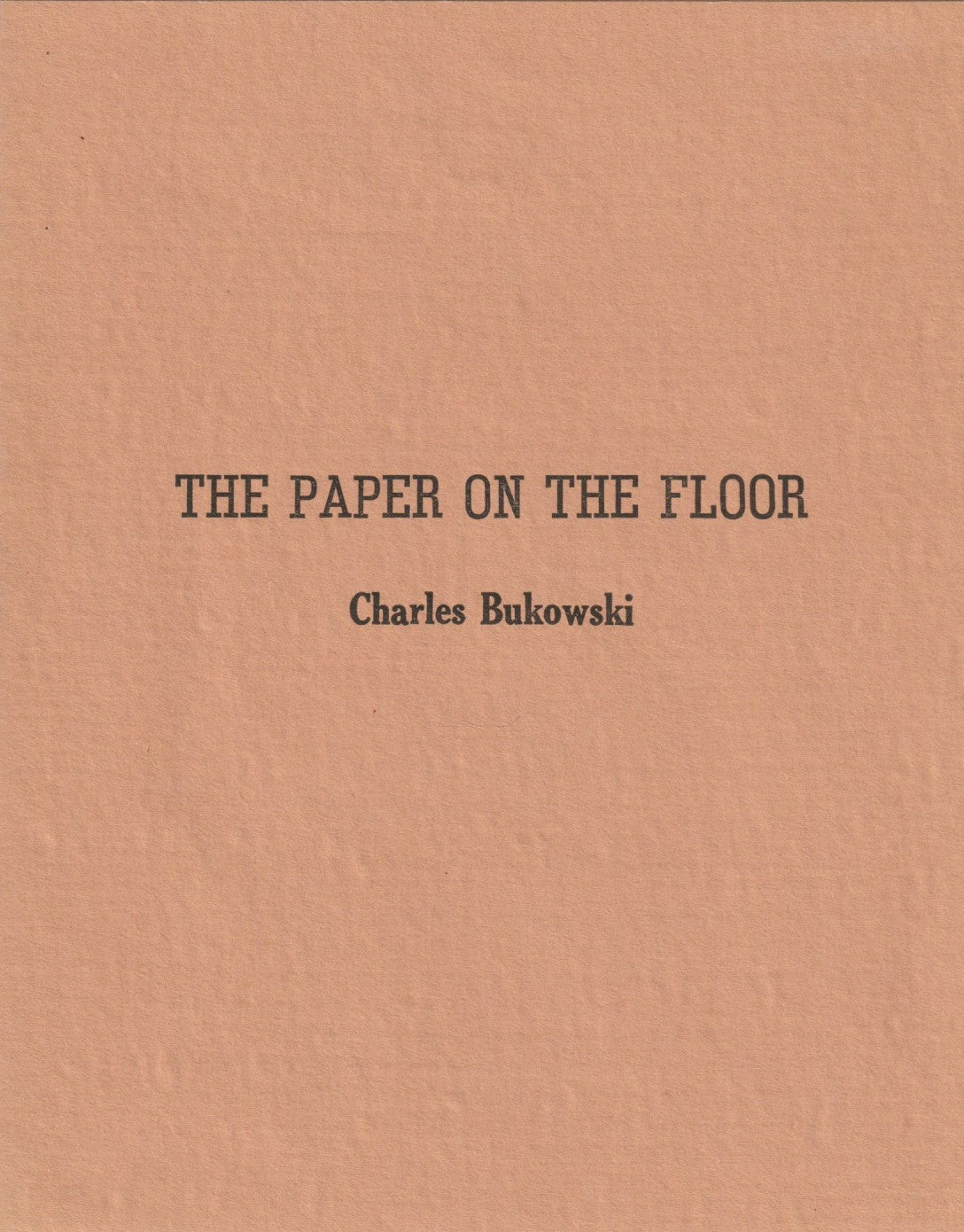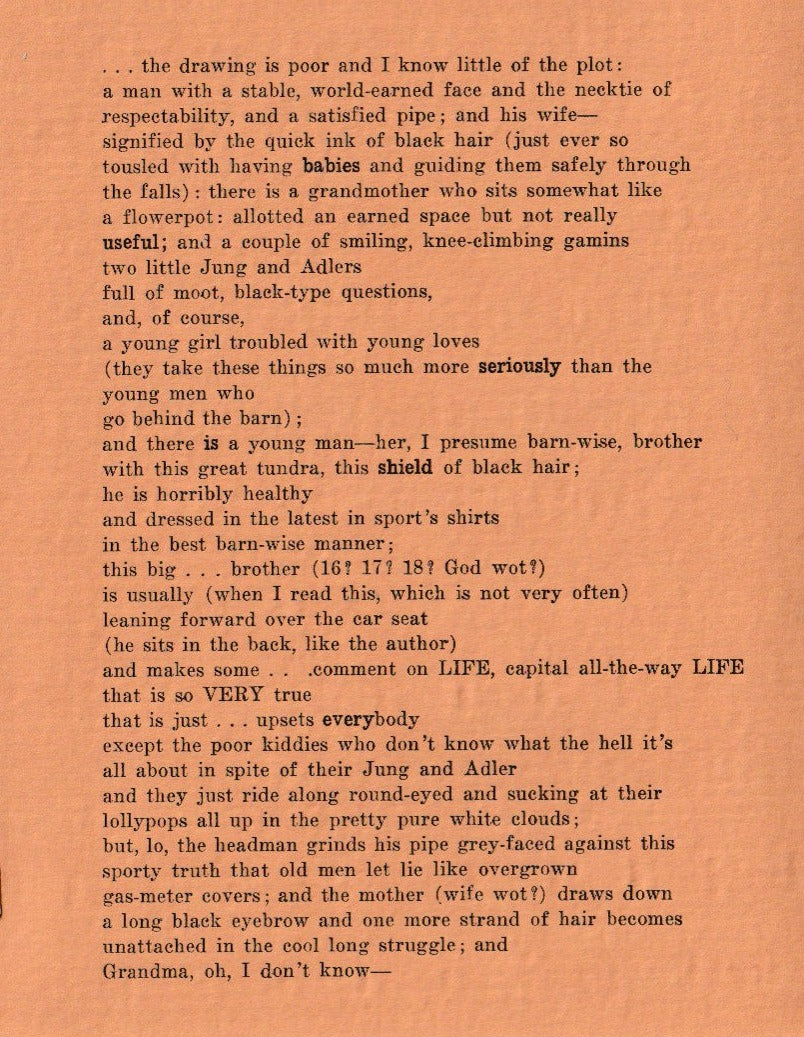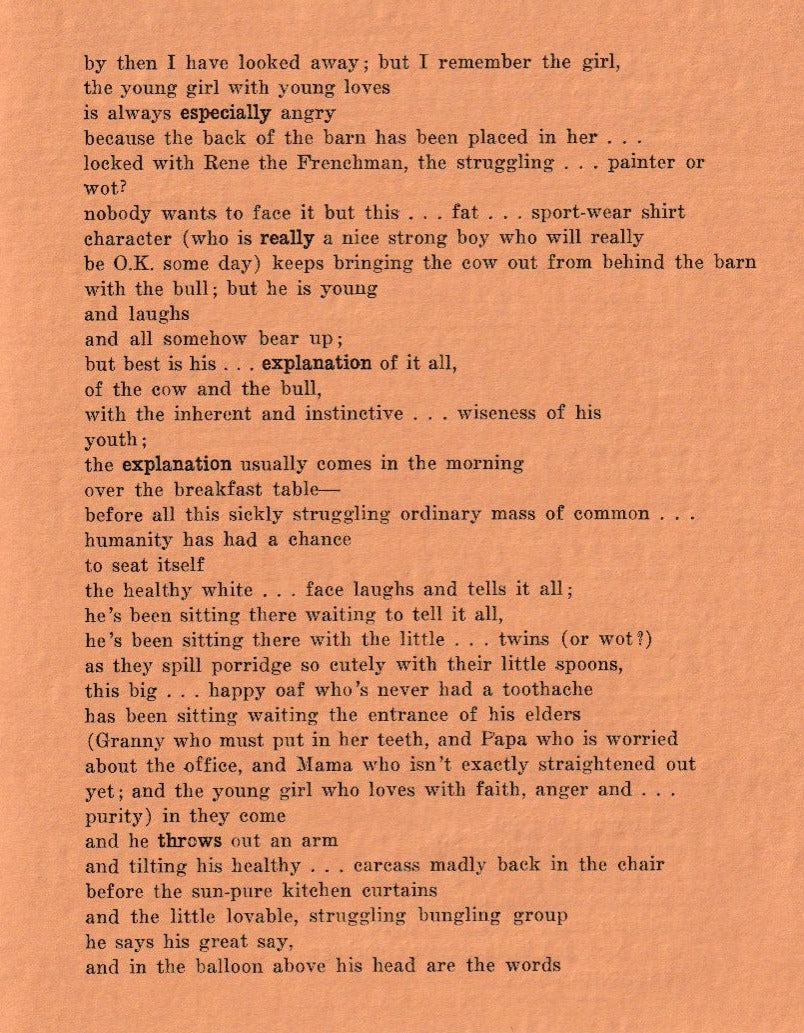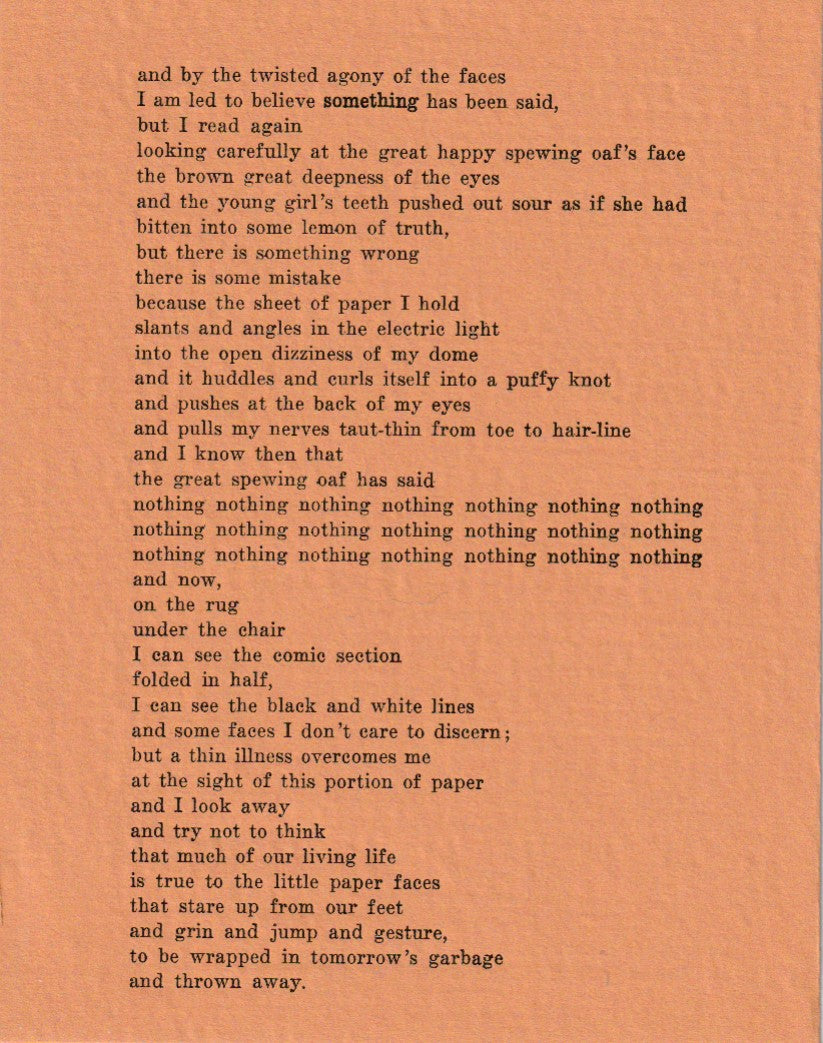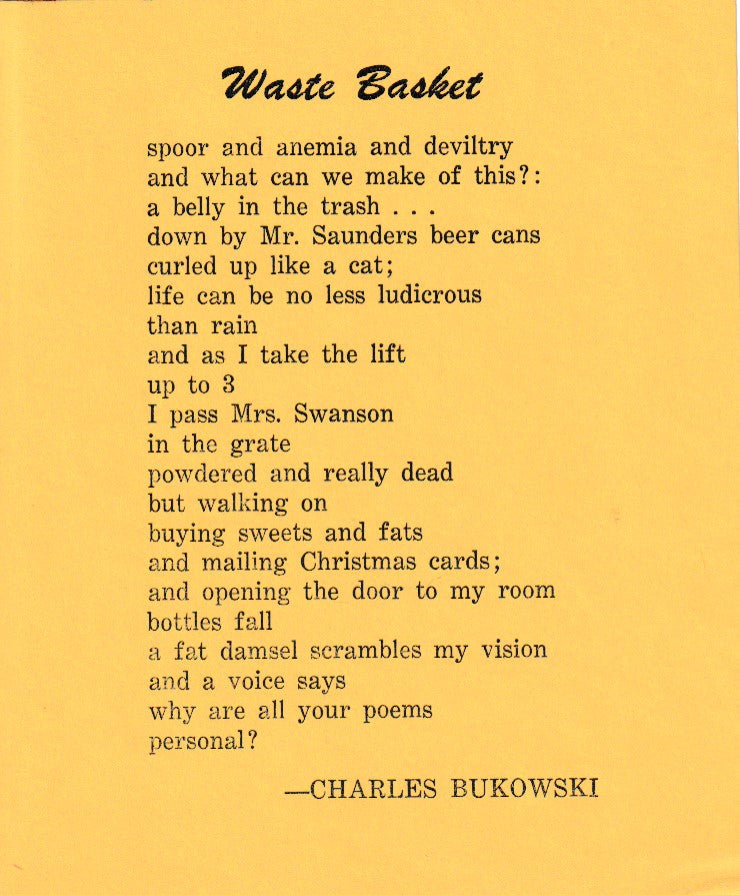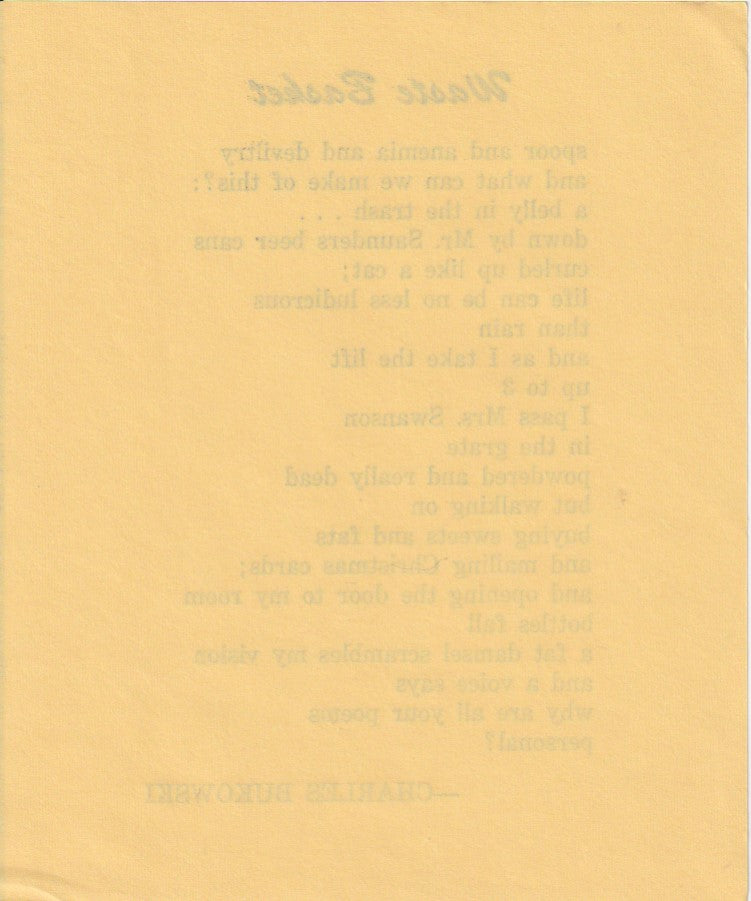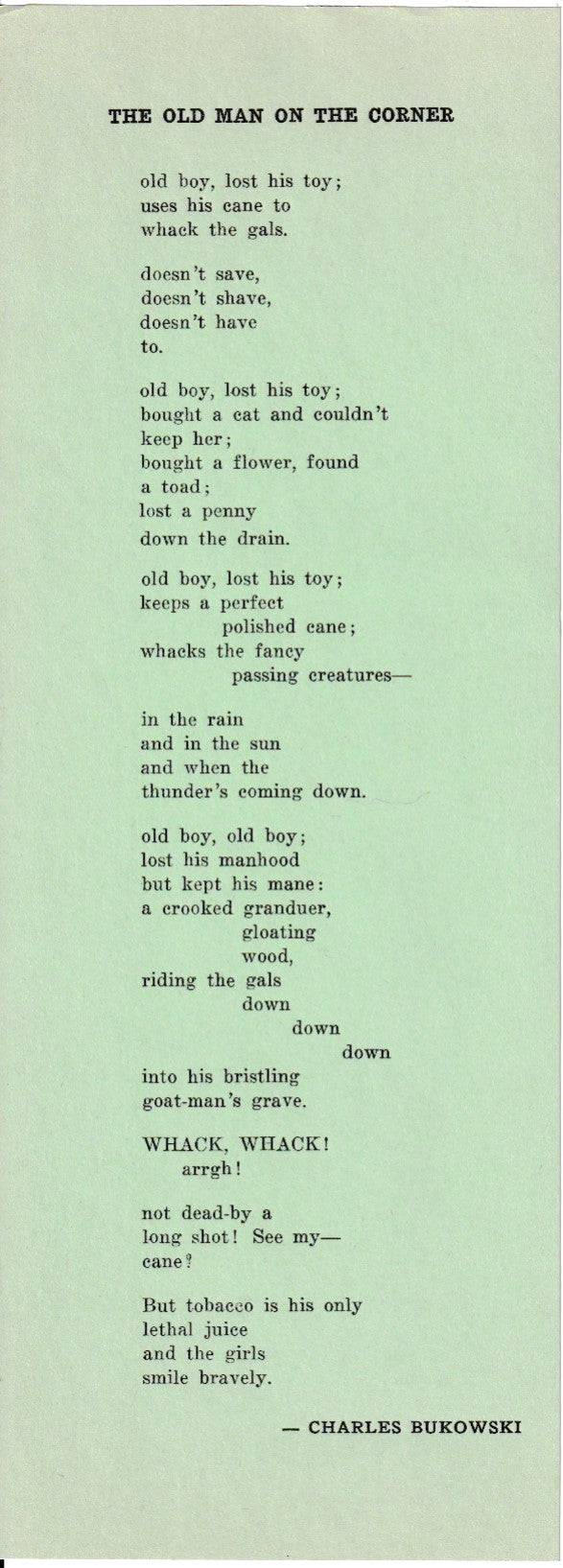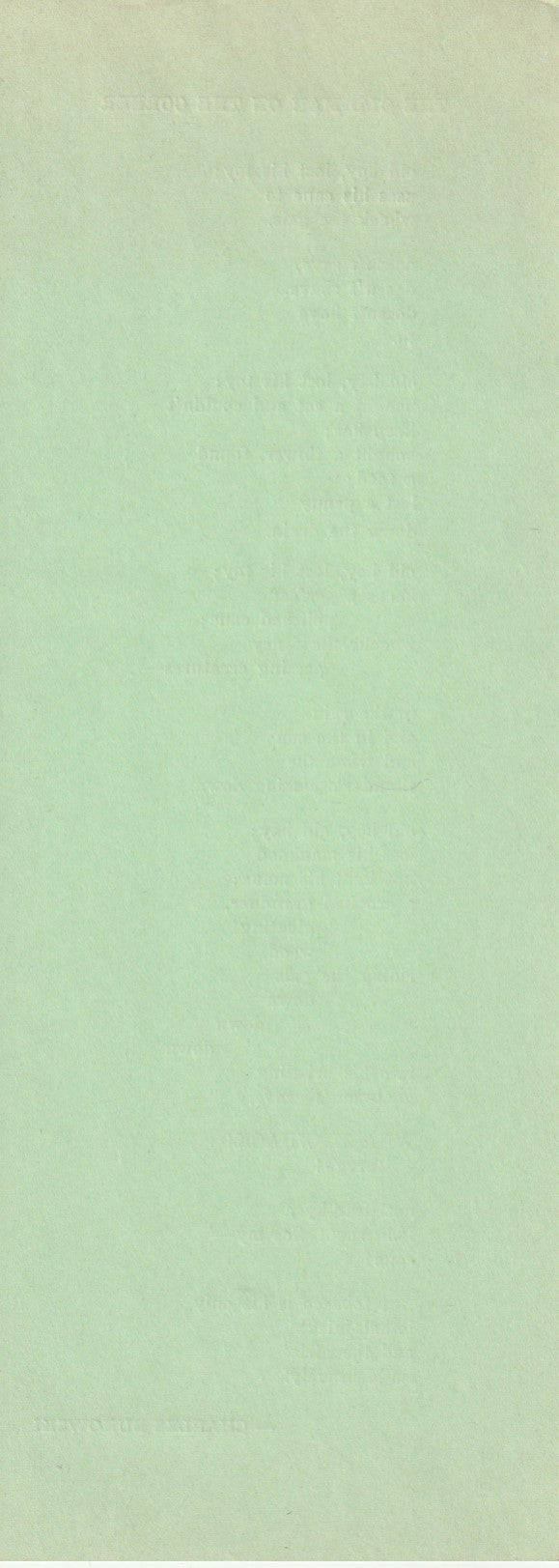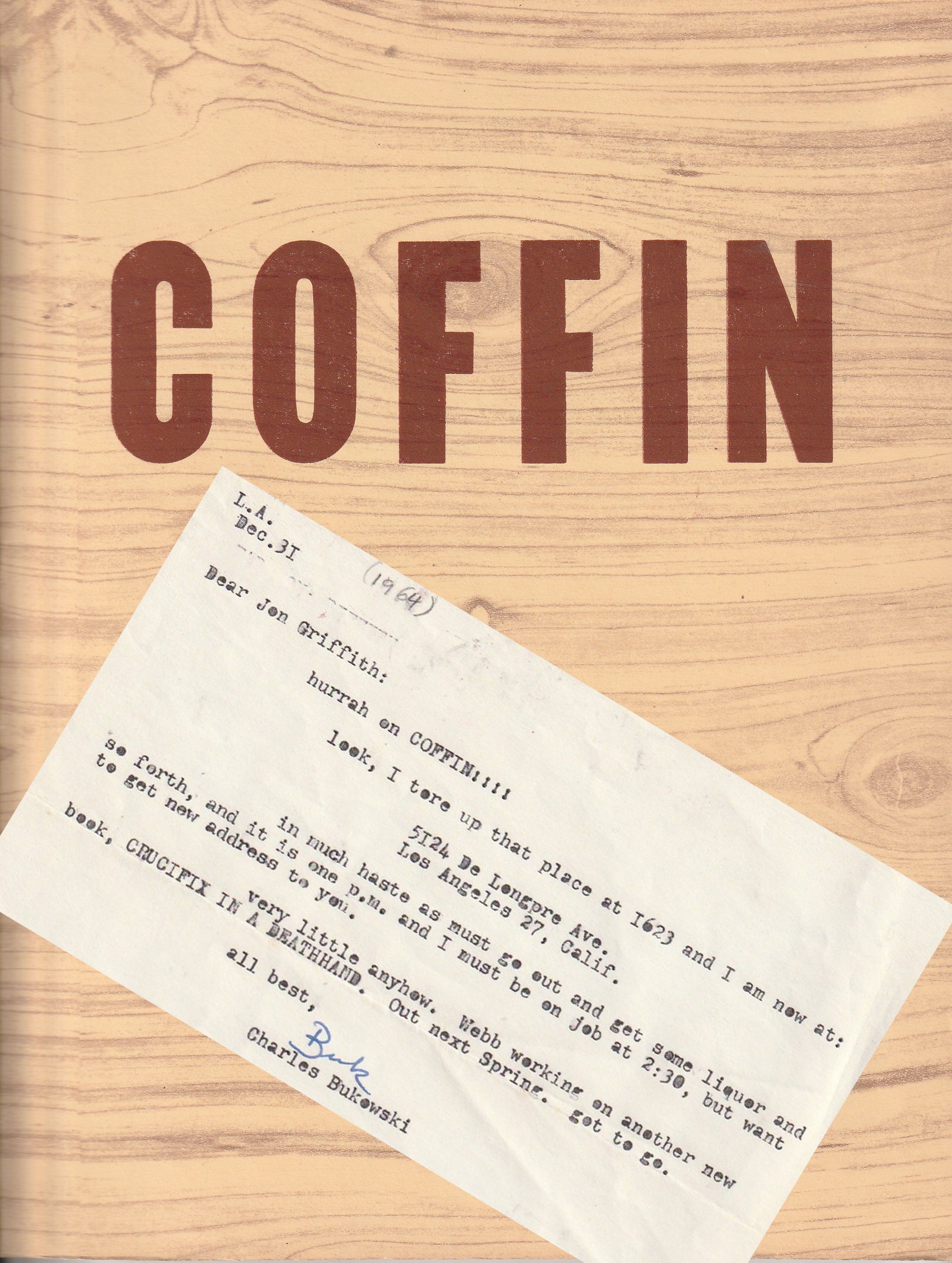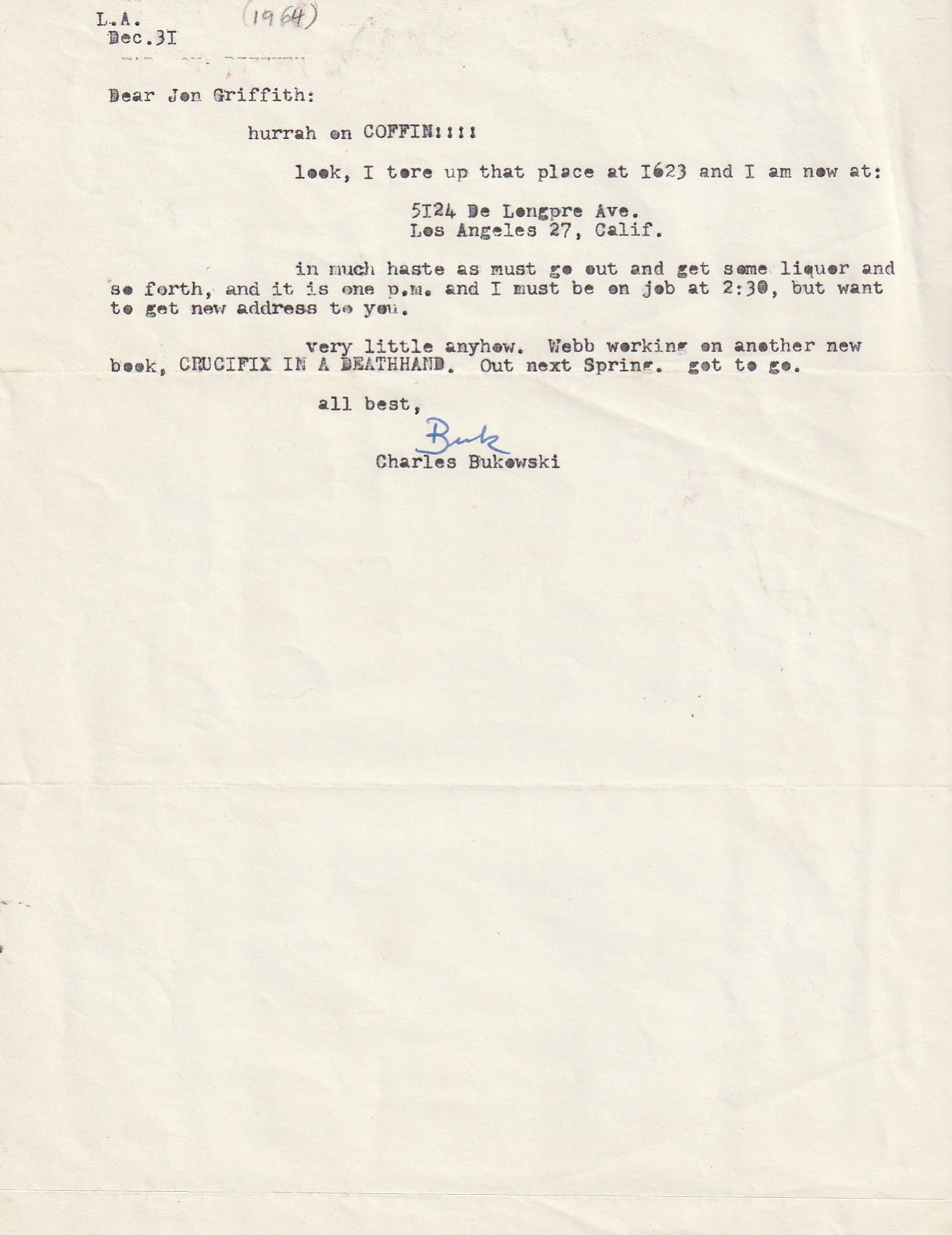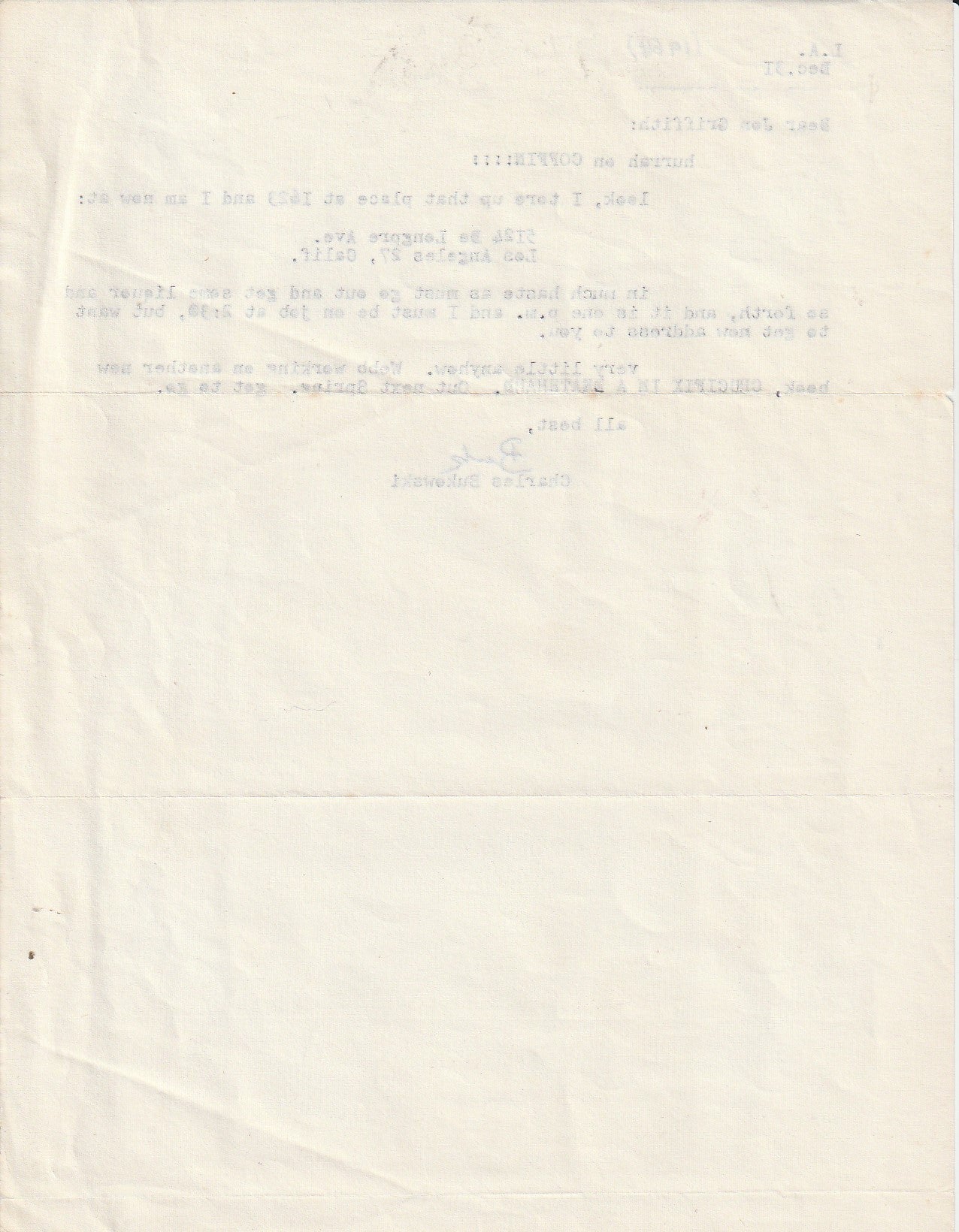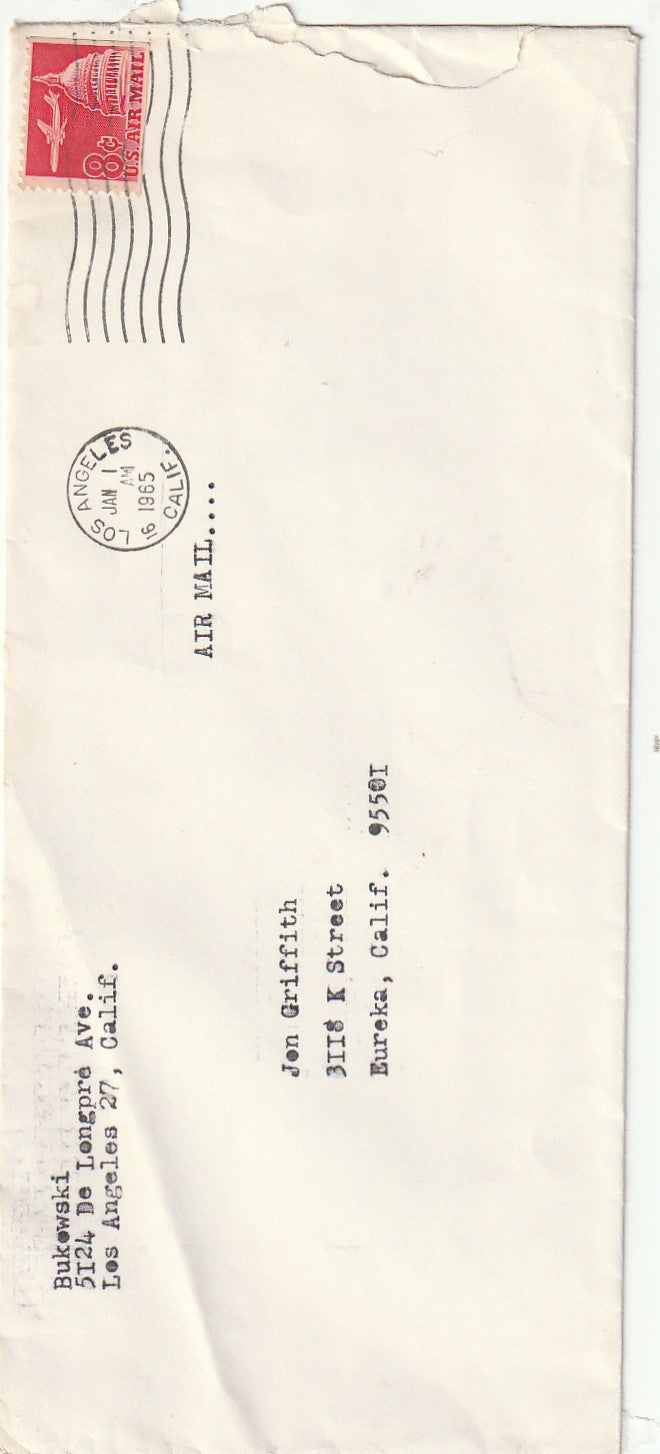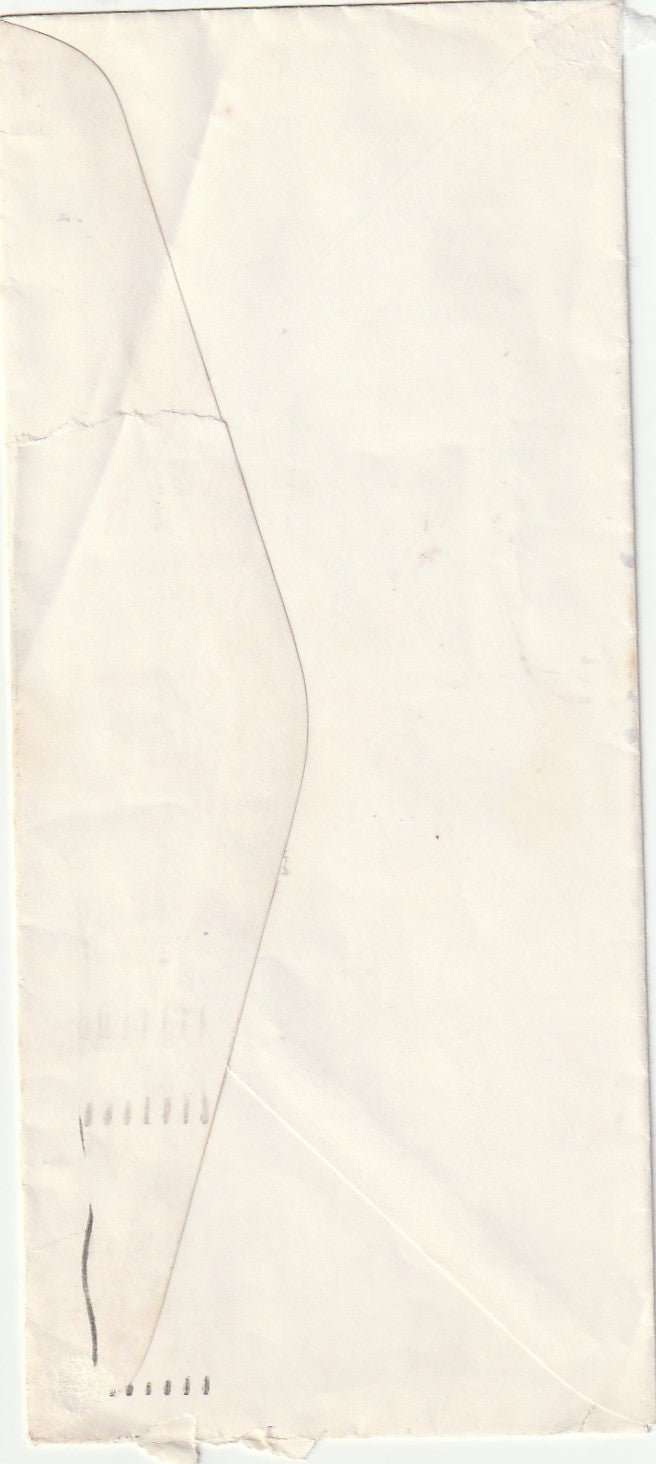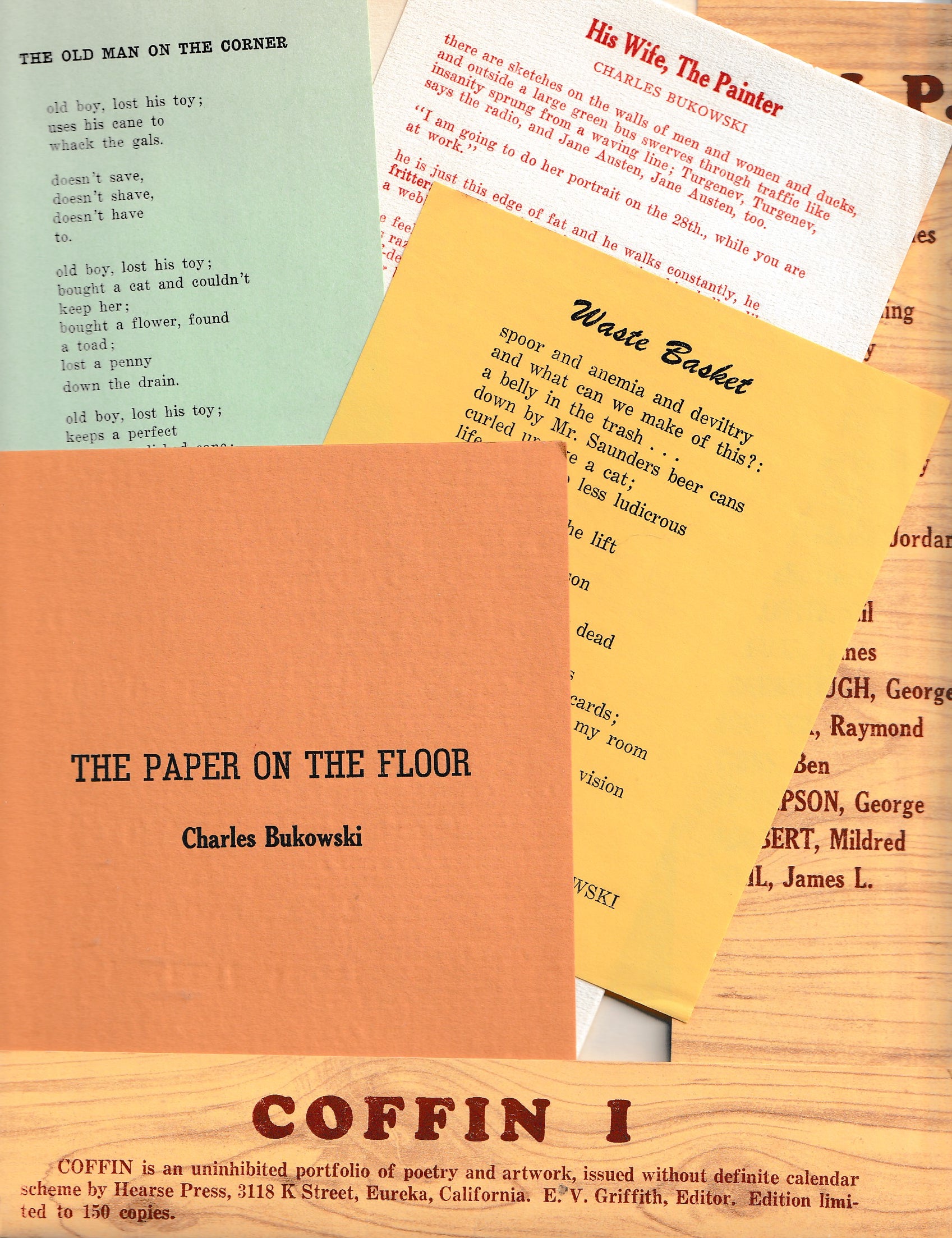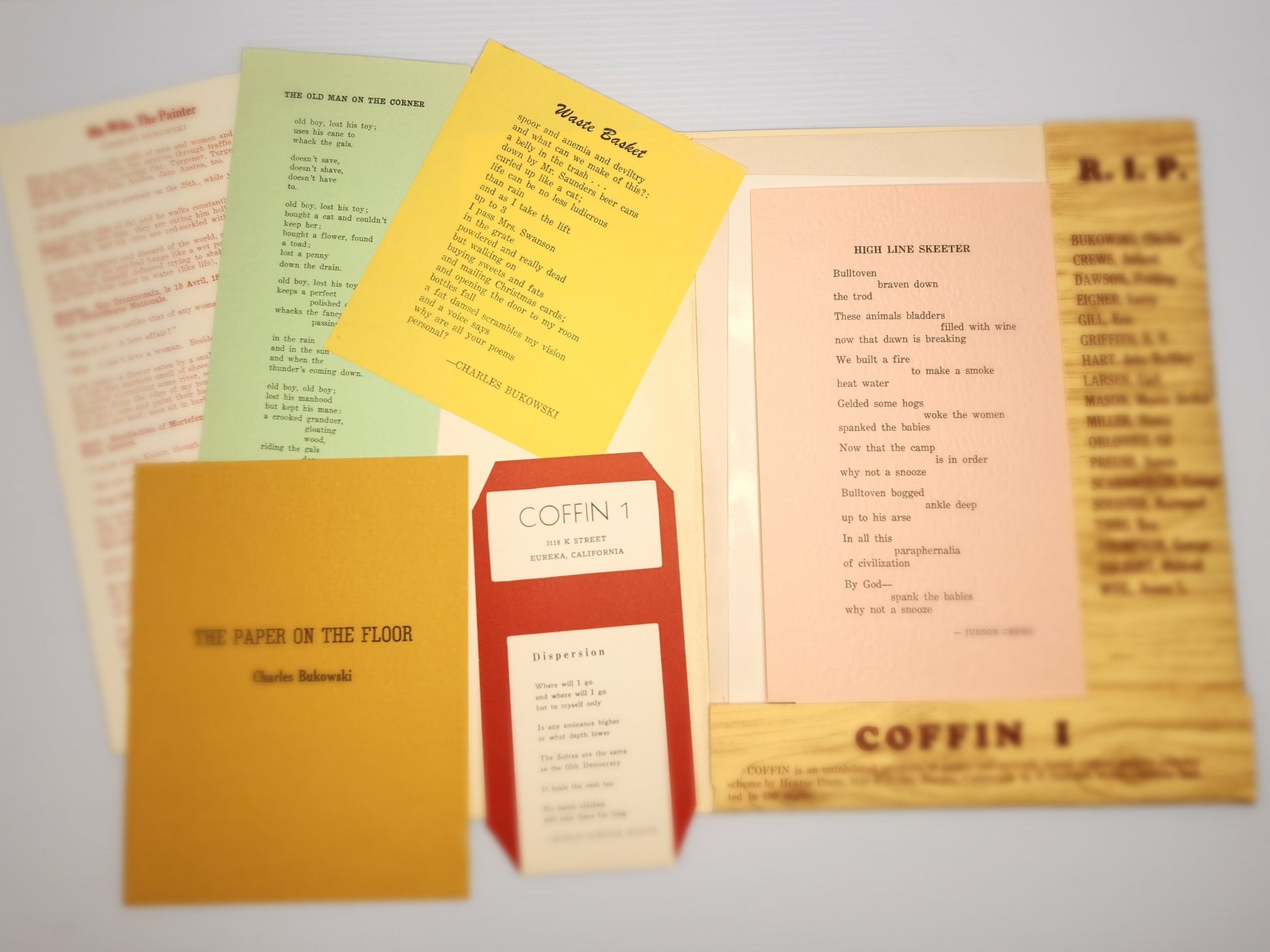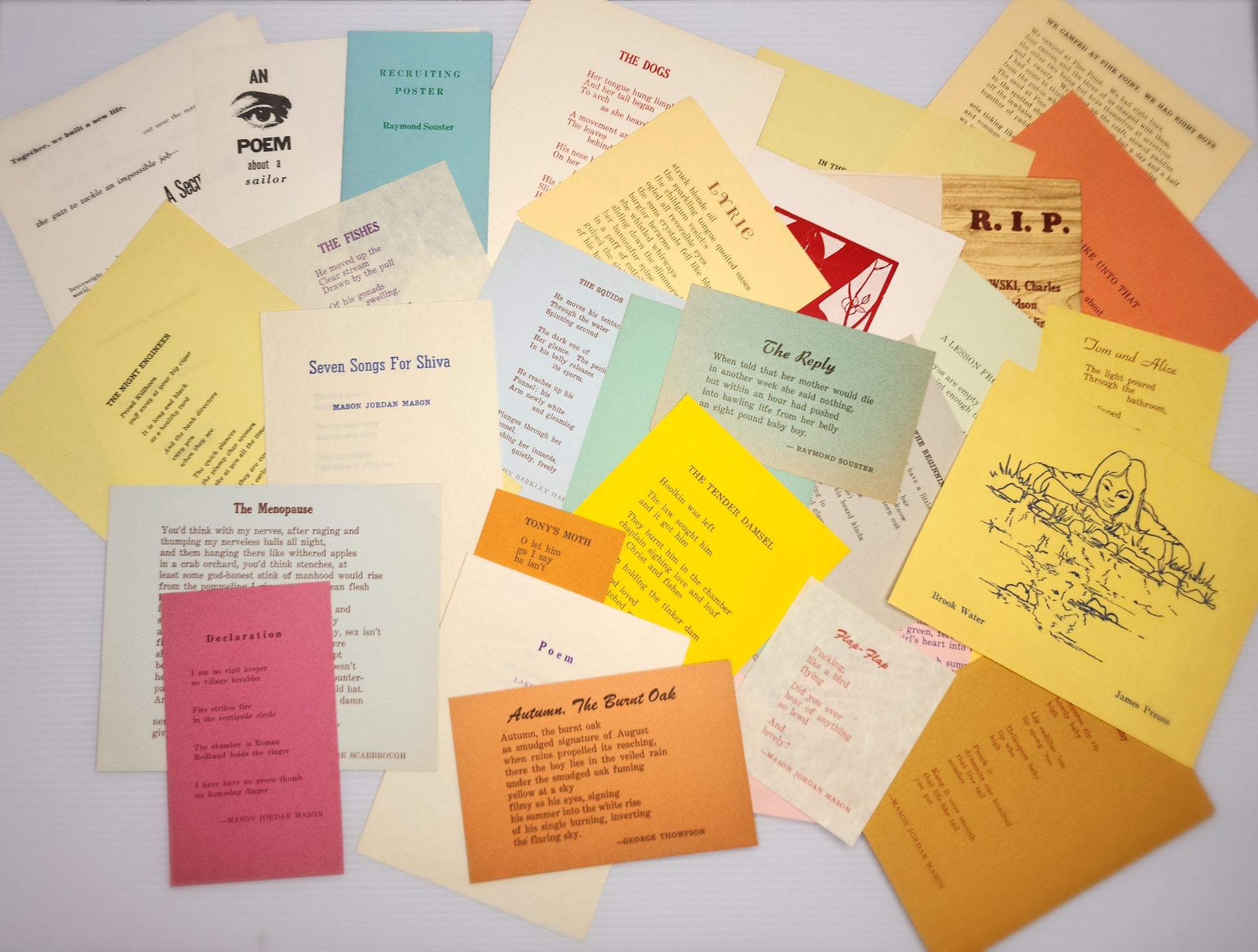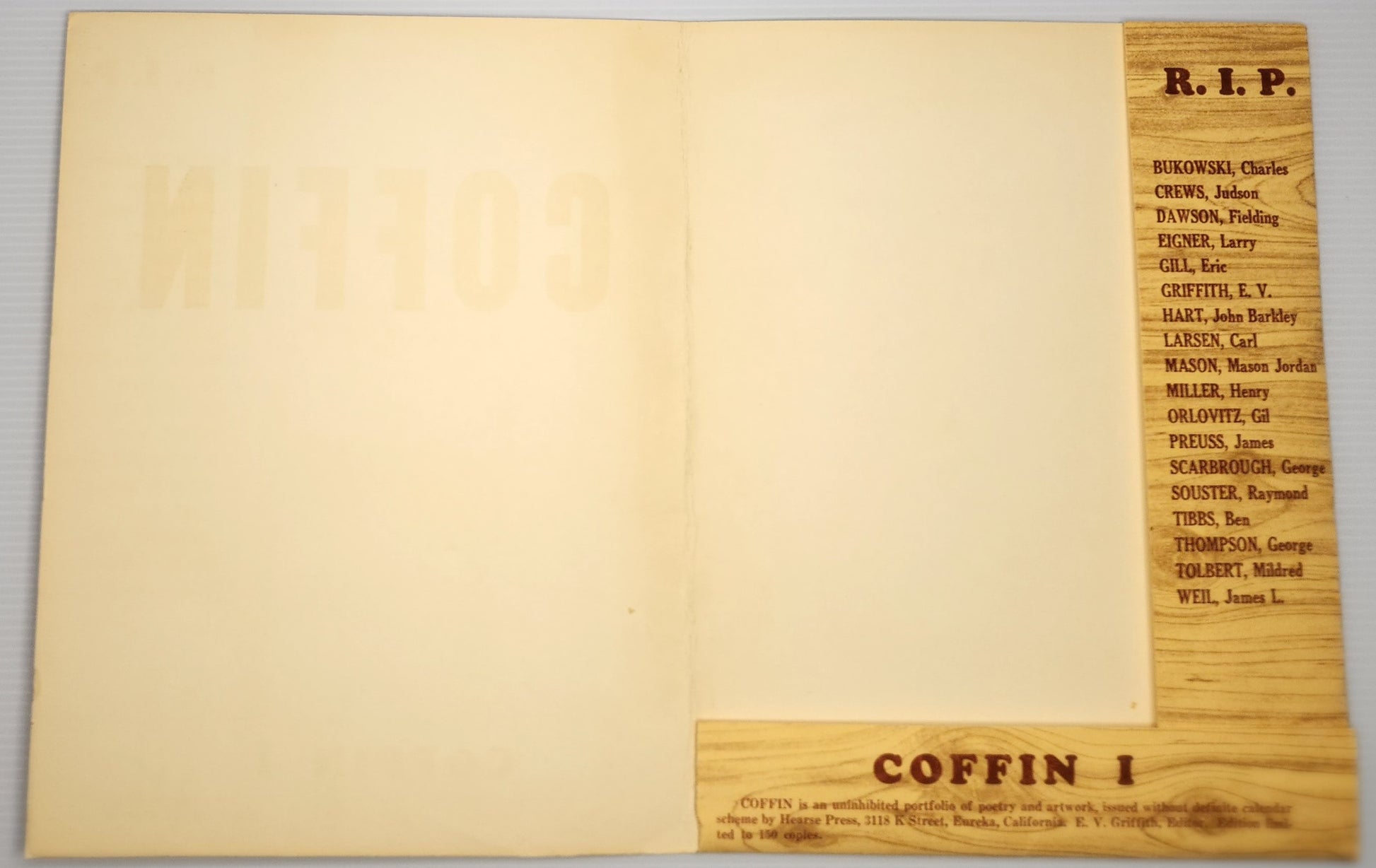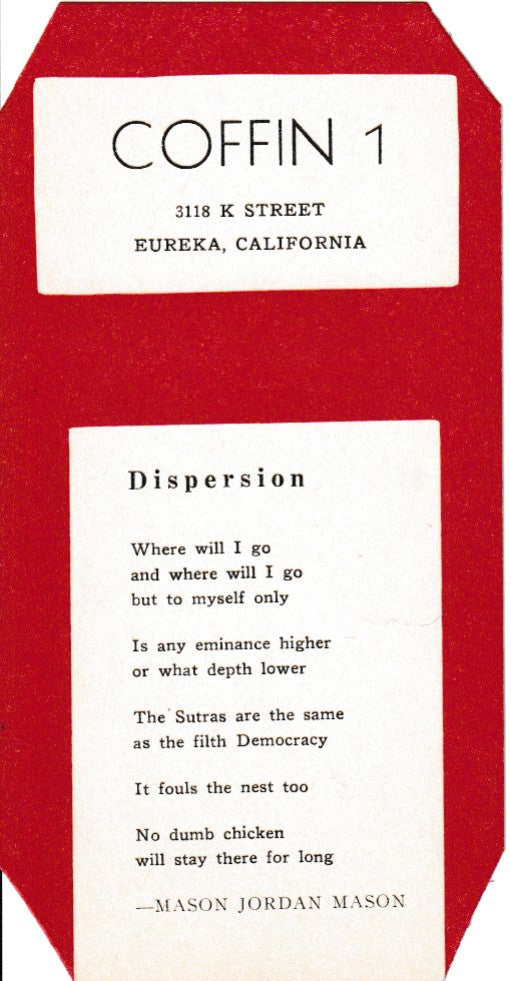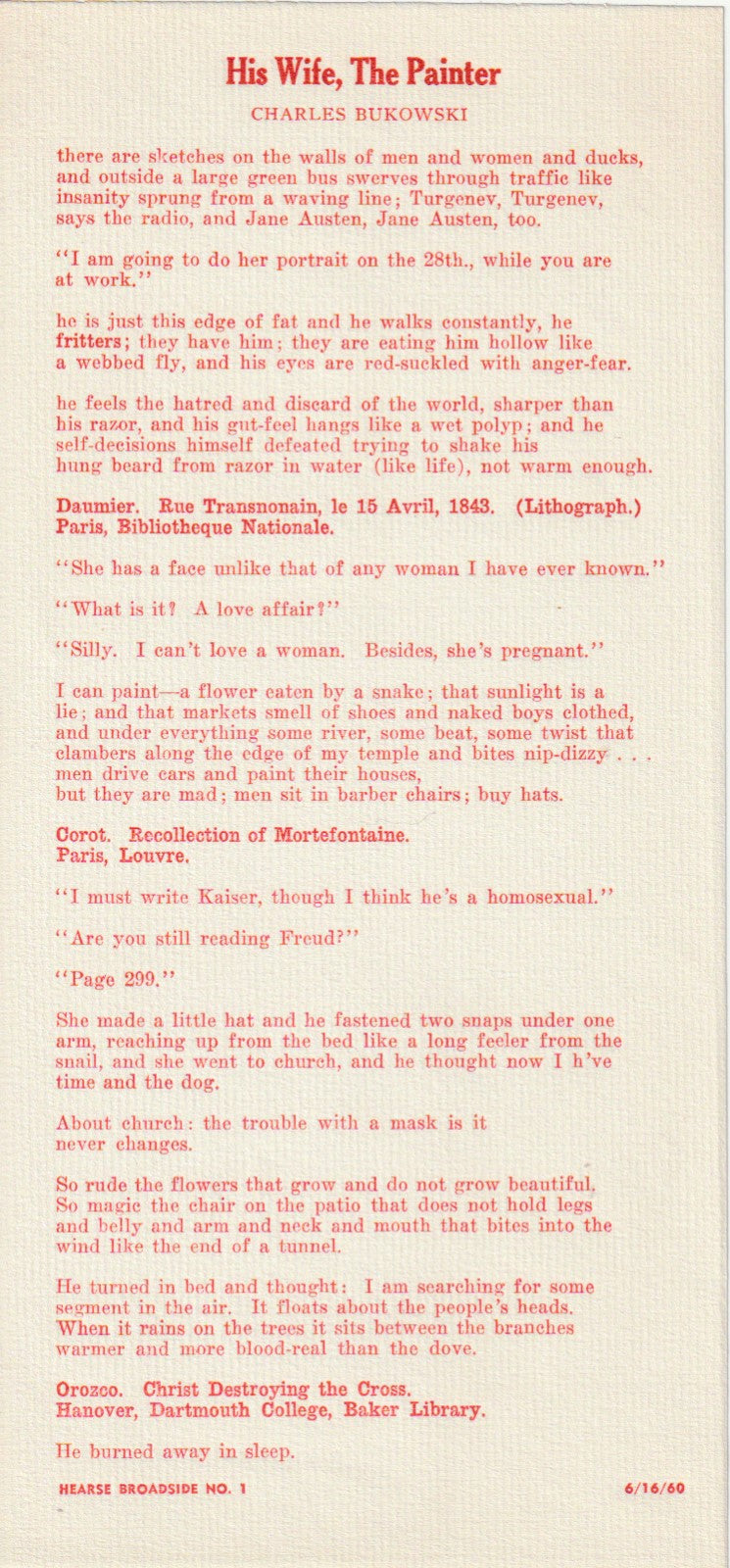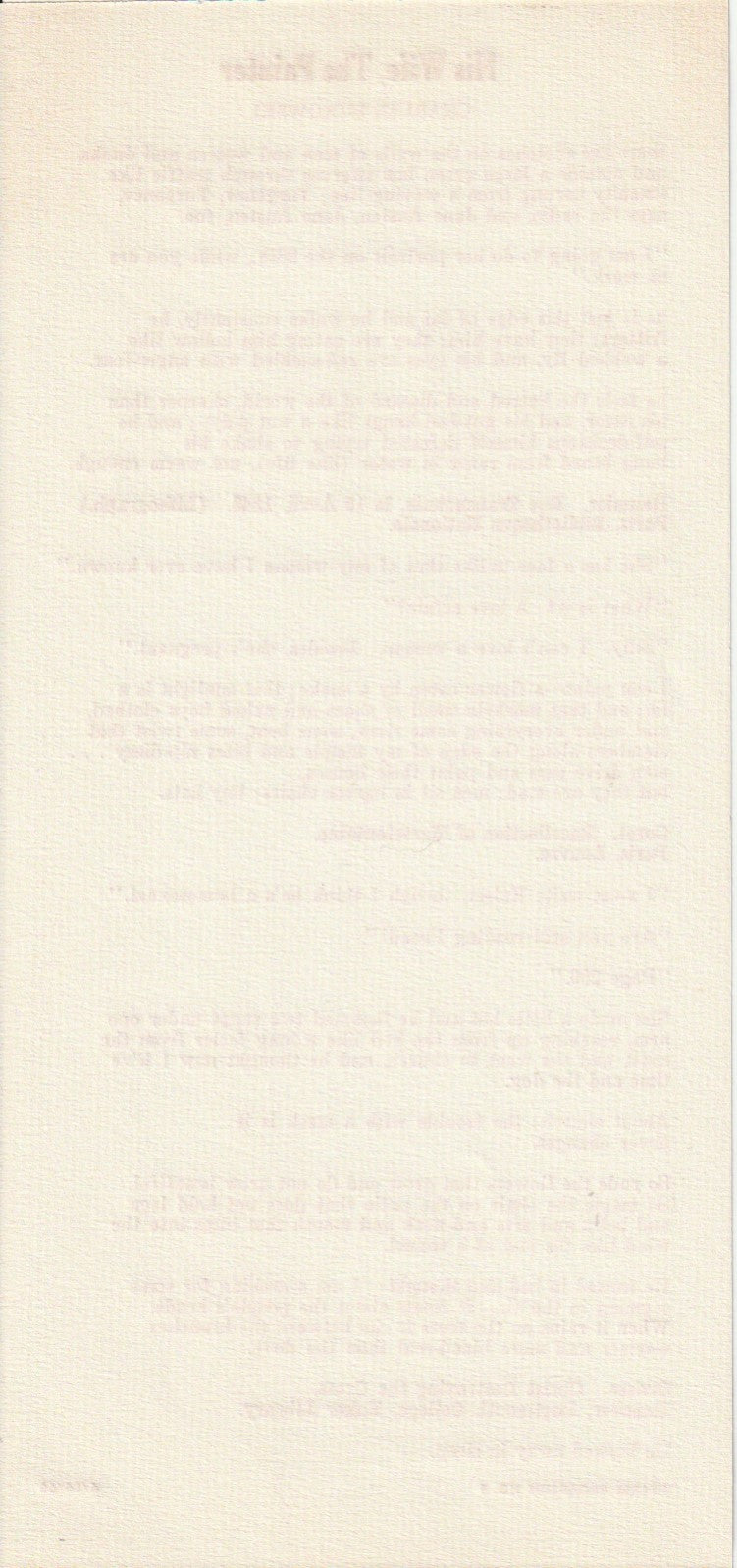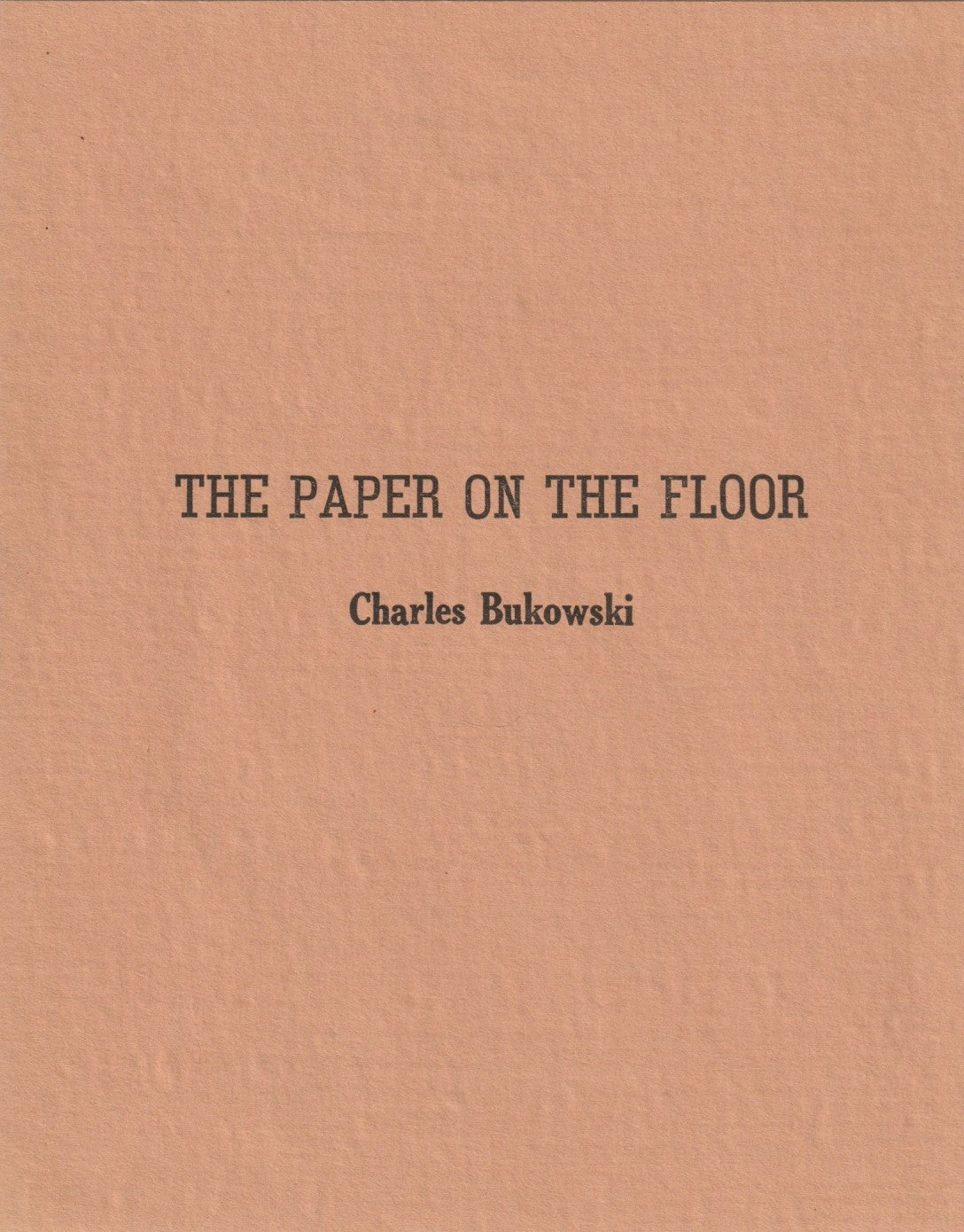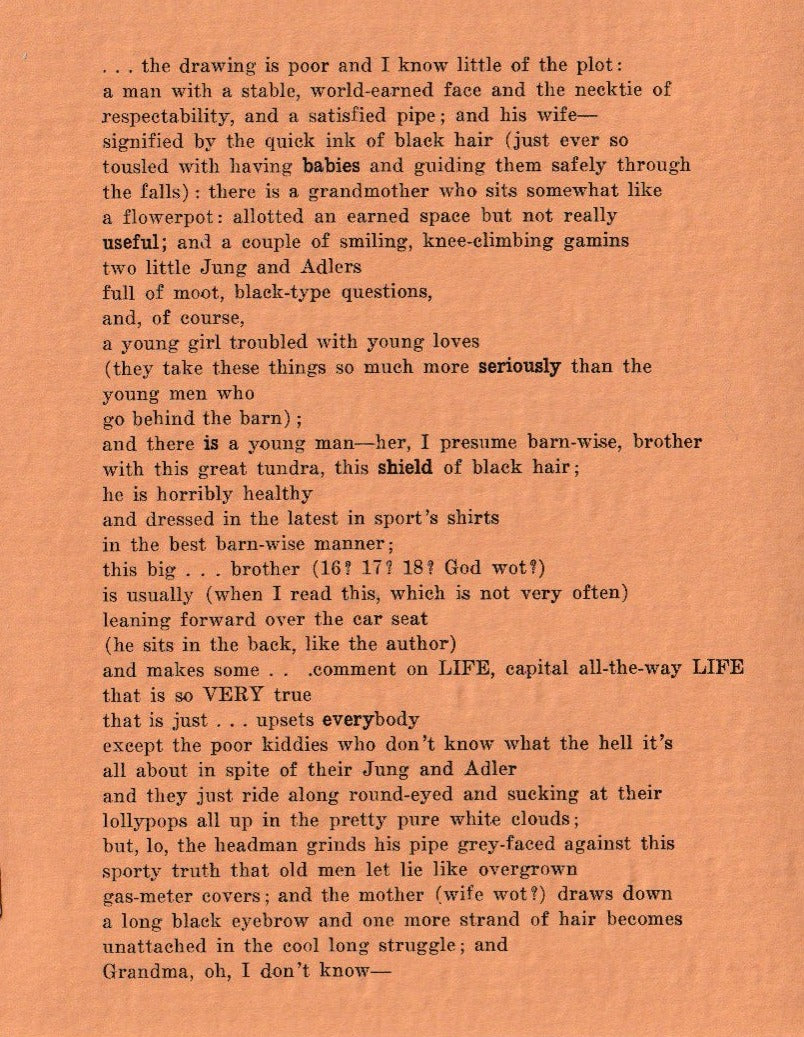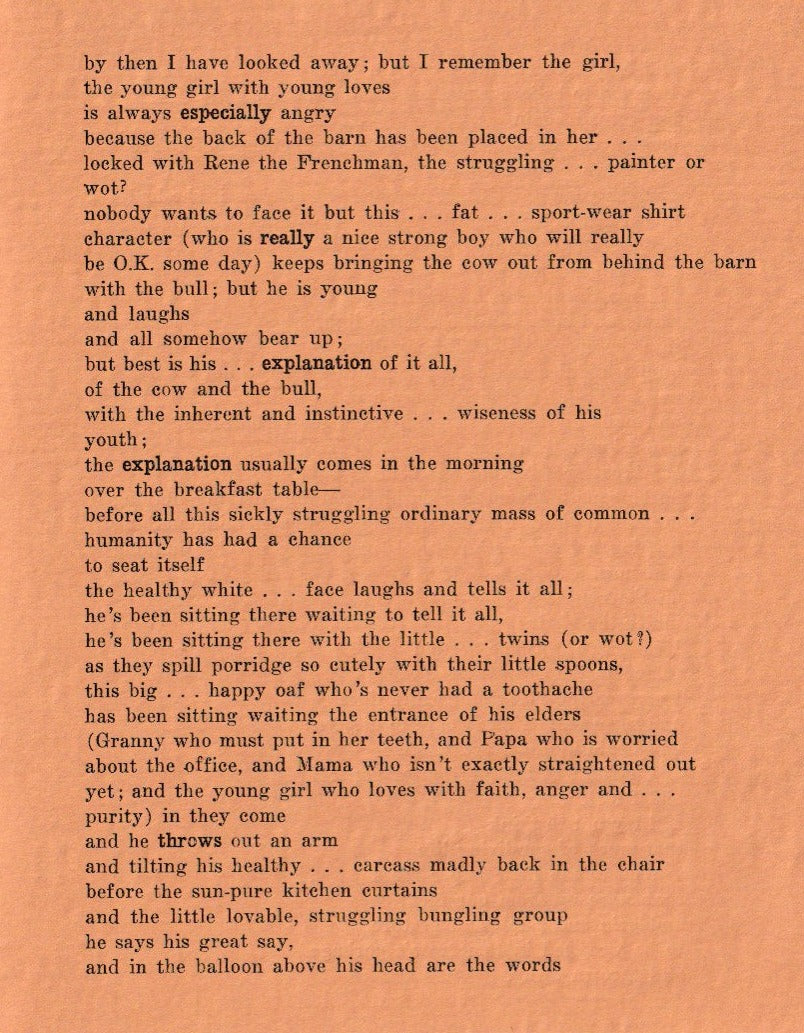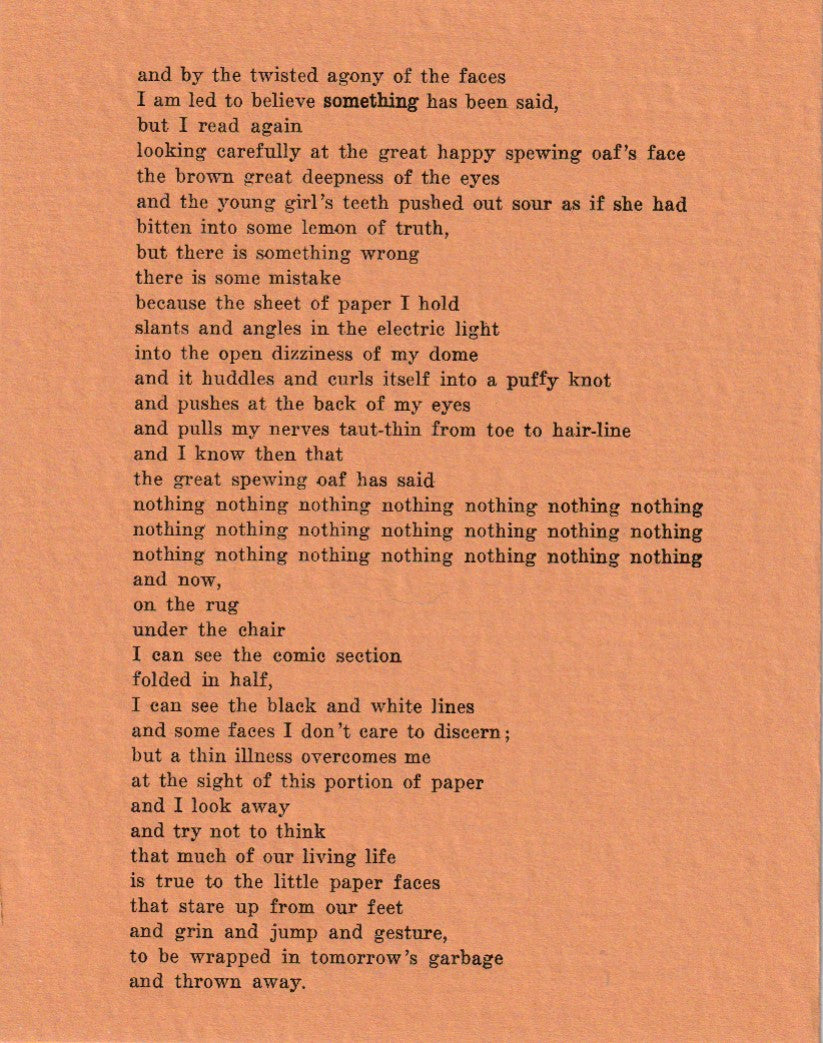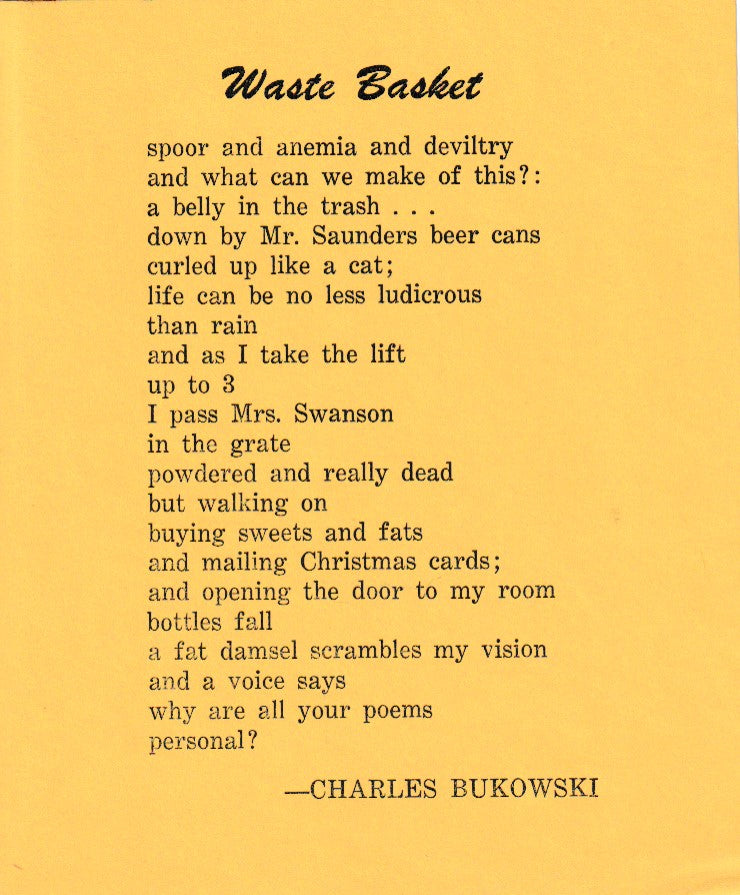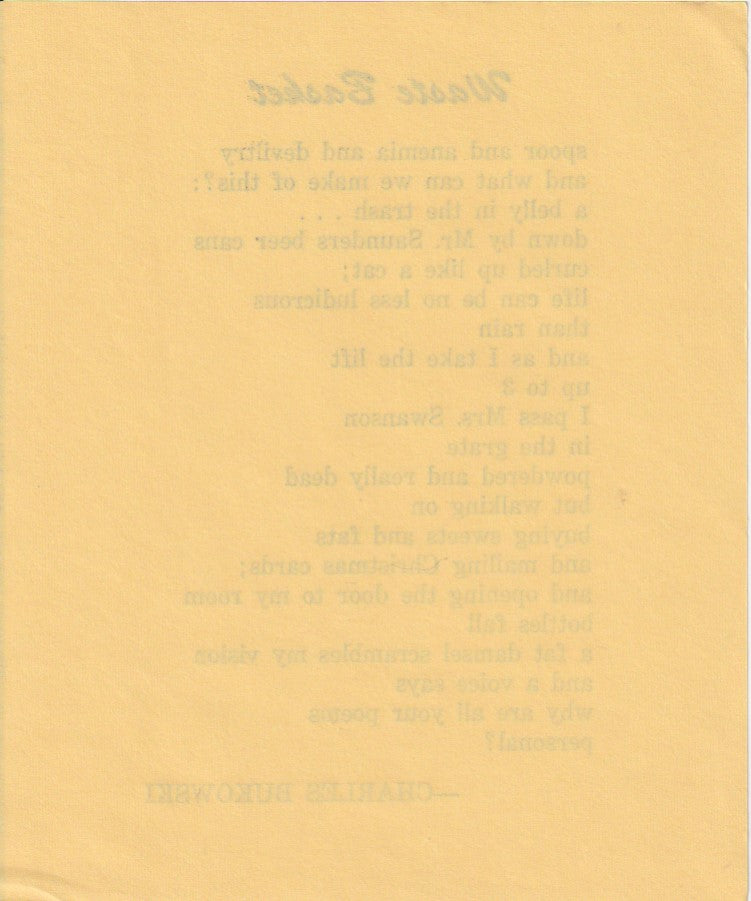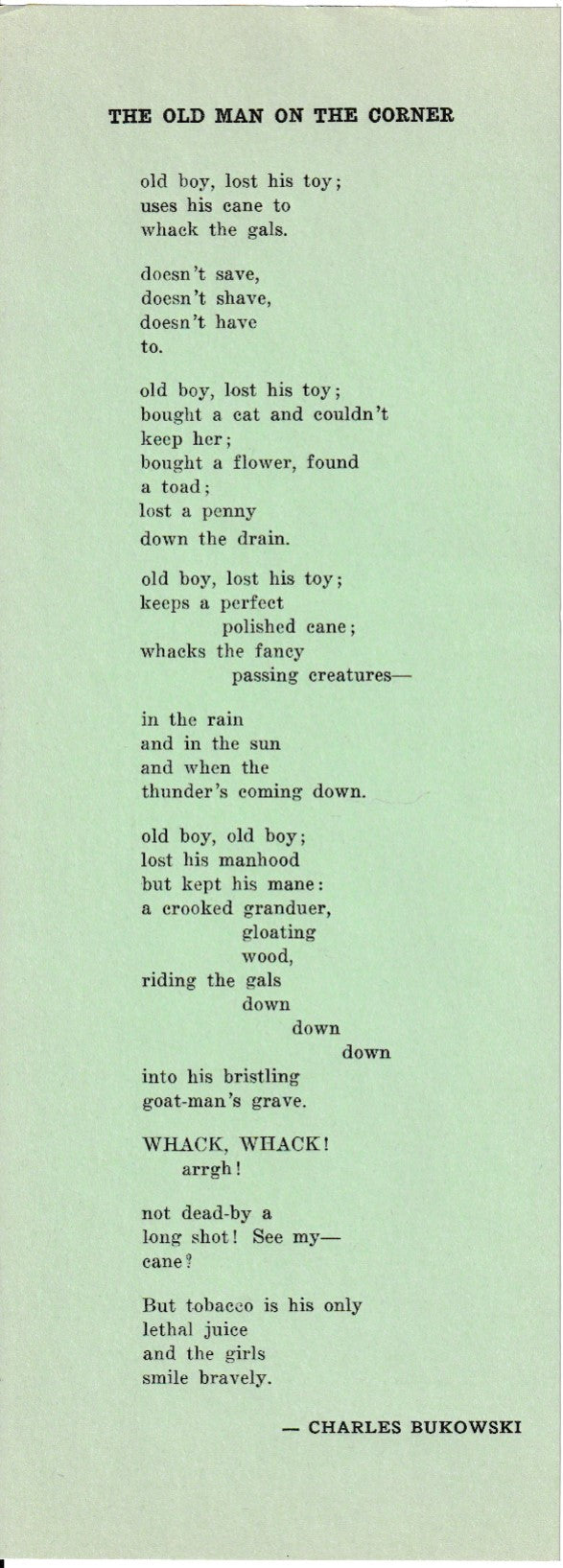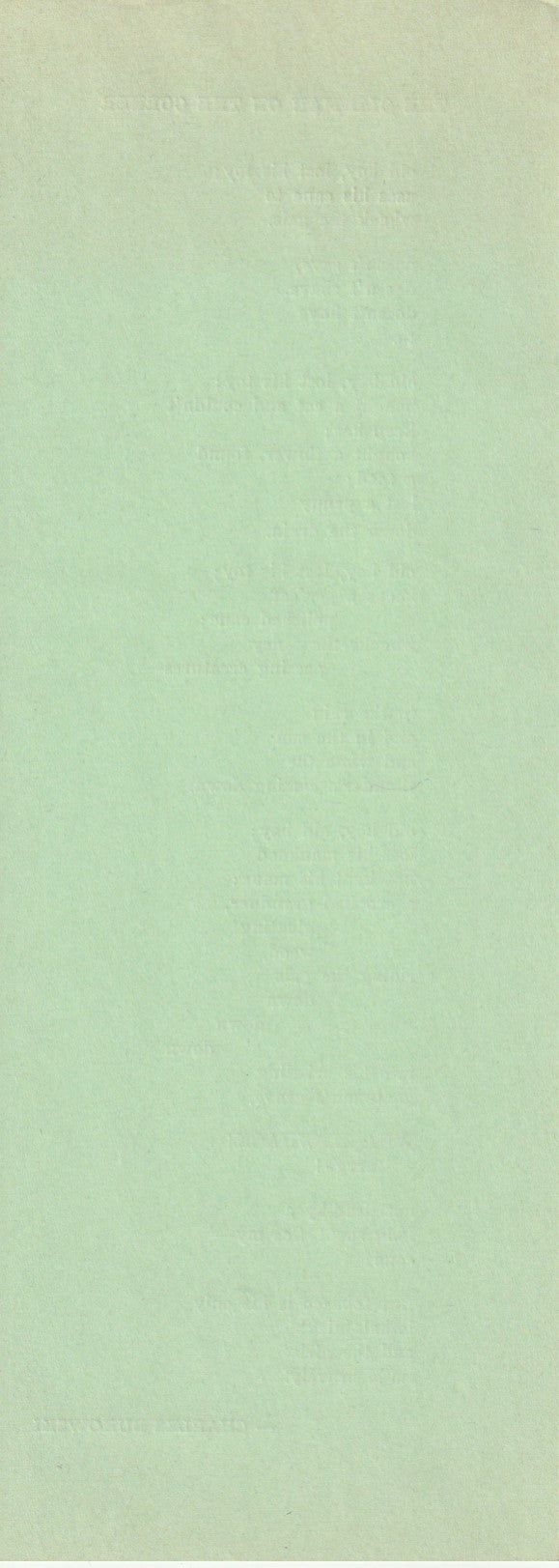The Buk Shop
Coffin 1 – Signed Letter and Portfilio Featuring Charles Bukowski’s First Standalone Work
Coffin 1 – Signed Letter and Portfilio Featuring Charles Bukowski’s First Standalone Work
Couldn't load pickup availability
Published in January 1965 by G.V. Griffith and his HEARSE Press, Coffin 1 is a very important early portfolio that features four Bukowski broadsides, including “His Wife, The Painter”, Bukowski’s first separately published work.
This copy includes a short letter to publisher E.V Griffith from Bukowski dated December 31, 1964.
The very short letter is notable for several important reasons:
- Bukowski happily responds to Coffin finally being published (after years in the making)
- Bukowski informs Griffith he has moved from his Mariposa address to De Longpre Avenue, where he would emerge from a complete unknown to a rock star in the Los Angeles community.
- Bukowski informs Griffith of his upcoming book from LouJon Press, Crucifix In A Deathhand
- Bukowski, true to himself, tells Griffith he has to keep the letter short so he can hit the liquor store before he has to show up for work.
The letter has a few light creases, but it’s as white and bright as the day it was mailed, including the envelope. I seriously doubt there is a letter from this period in this condition, even in university archives.
But back to Coffin:
HEARSE Press would eventually publish Bukowski’s first book, “Flower, Fist and Bestial Wail”, but it took over two years and Bukowski became very distraught waiting. Griffith eventually stopped responding to Bukowski’s inquiries about the book’s progress, driving Bukowski crazy because he had already told people it was coming out over-and-over and even purchased advertising for the book.
To help Bukowski off the ledge, in August 1960, Griffith distributed 50 copies of “His Wife, The Painter”.
“Flower, Fist and Bestial Wail” would be published two months later.
In addition to His Wife The Painter, Coffin 1 also includes three other broadsides: The Paper on the Floor (one sheet folded twice to make a booklet), Waste Basket, and The Old Man on the Corner
His Wife The Painter, The Paper on the Floor, and Waste Basket are all in Fine condition.
The Old Man on the Corner shows light toning to the top and bottom portions of the broadside. There is also a crease on the upper left corner. I had another copy of Coffin where the toning on this broadside looked nearly identical, so maybe it just comes from aging.
The reported number of broadsides in Coffin 1 have varied between 41–44 in copies I’ve seen before. This one includes 42, all in Near Fine to Fine condition. One or two may be Near Fine-minus. The other contributors include Judson Crews, Fielding Dawson, Larry Eigner, Eric Gill, E. V. Griffith, John Barkley Hart, Carl Larsen, Mason Jordan Mason, Henry Miller, Gil Orlovitz, James Preuss, George Scarbrough, Raymond Souster, Ben Tibbs, George Thompson, Mildred Tolbert and James L. Weil.
Operating out of Eureka, California, Griffith also published Hearse Magazine, starting with HEARSE 1 in 1957. Bukowski appeared in HEARSE 2 in 1958 and would appear in nine issues between 1958 to 1972.
The magazine went on hiatus after 1961. As Griffith would later recall:
“I let HEARSE lapse in 1961, because of other obligations. In 1969, two things
happened which brought me back to publishing again. In culling some old files, I found a hefty envelope of unpublished Charles Bukowski poems, which Bukowski had apparently sent me some time previously (the postmark-date was not readable), but which I had filed away and forgotten. Among these manuscripts was the long poem 'The Days Run Away Like Wild Horses Over the Hills'. I wrote Bukowski, asking if this poem was still available, and saying that reading the poem made me itch to start publishing again. He replied that the poem was still unpublished, and that if I wanted it for HEARSE, I could have it."
Case 4.
Share
